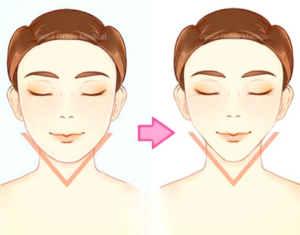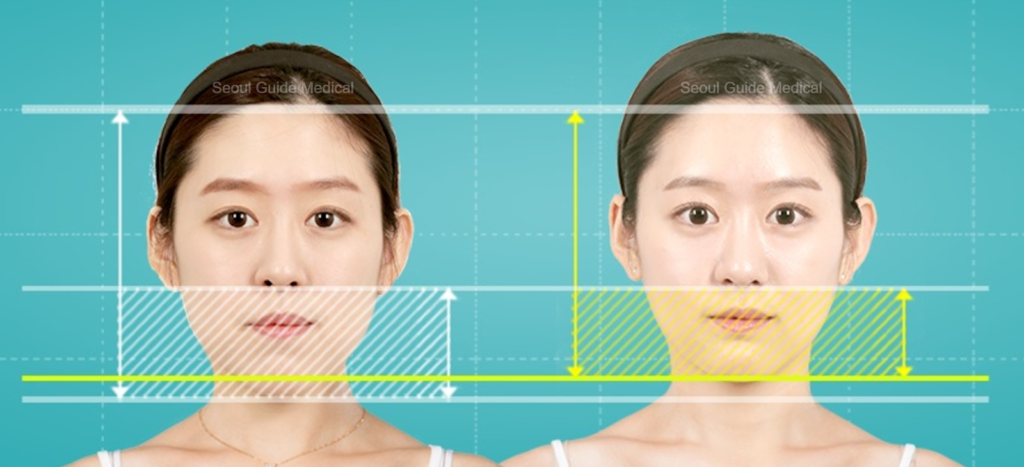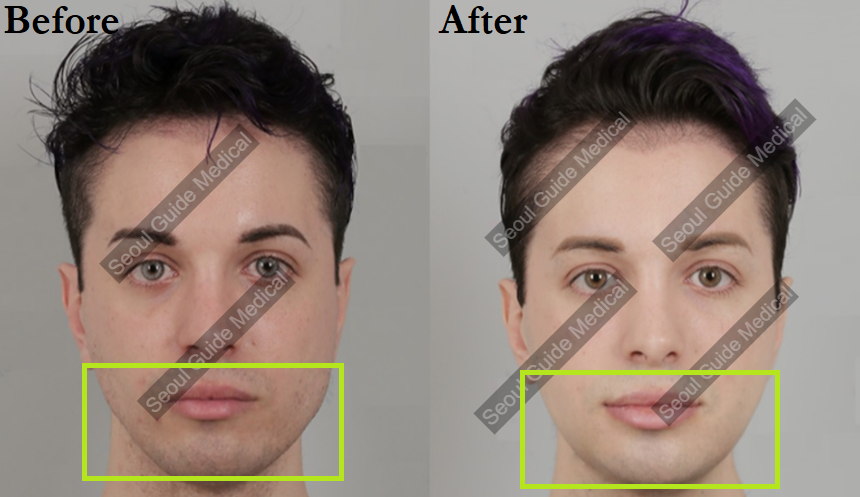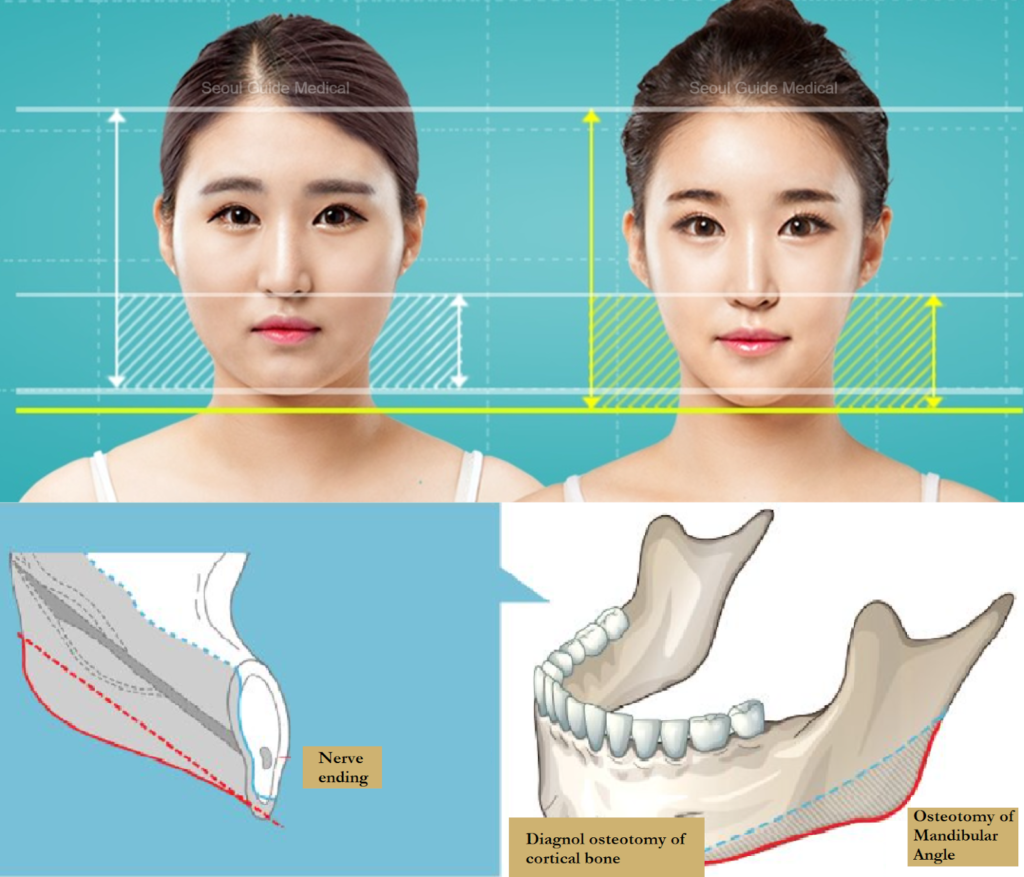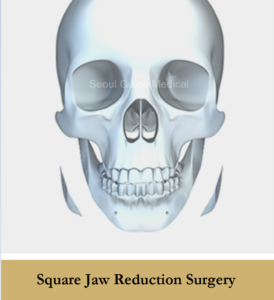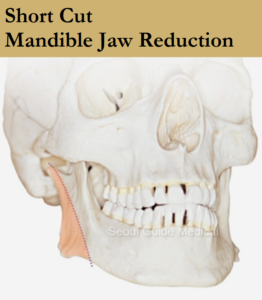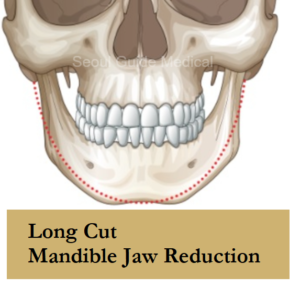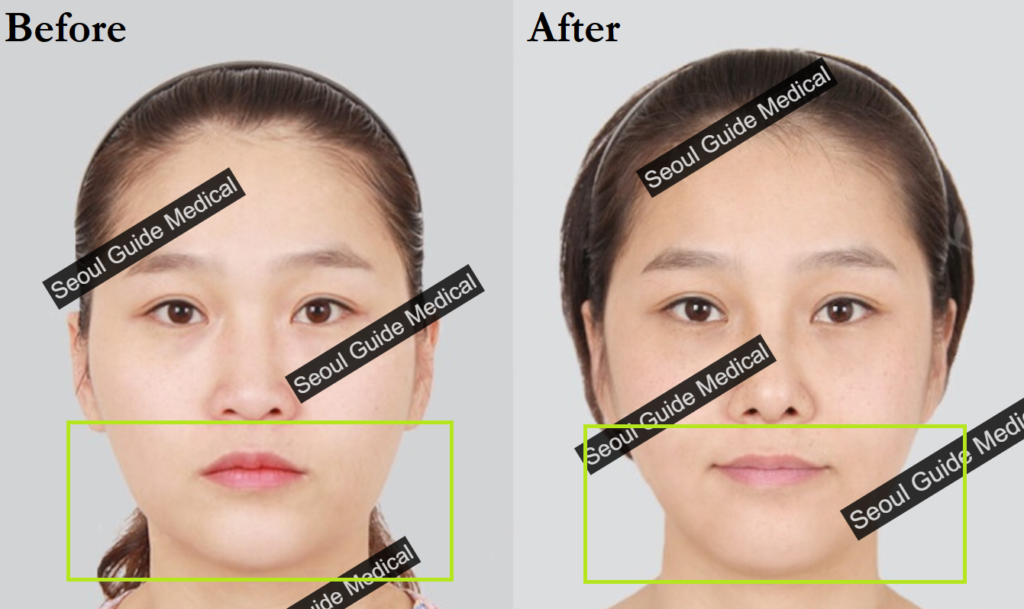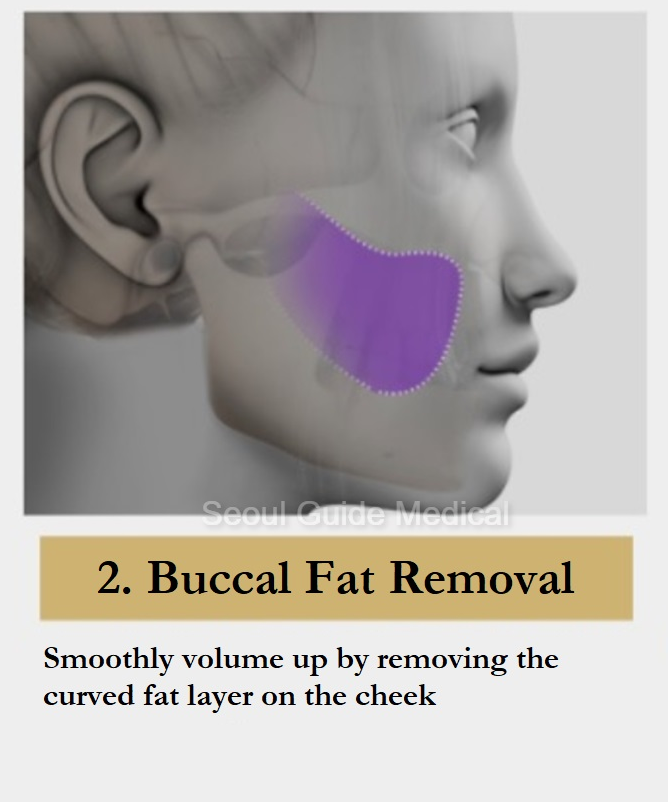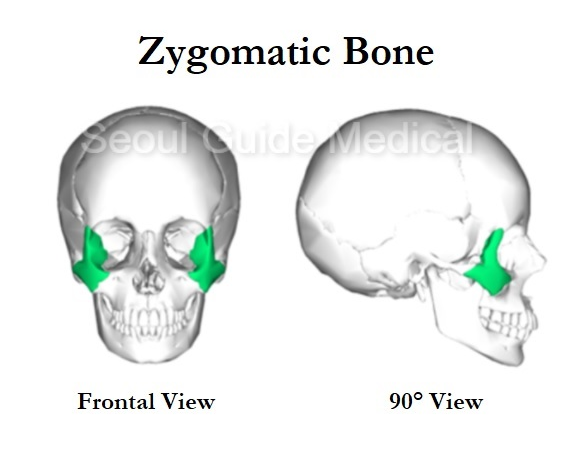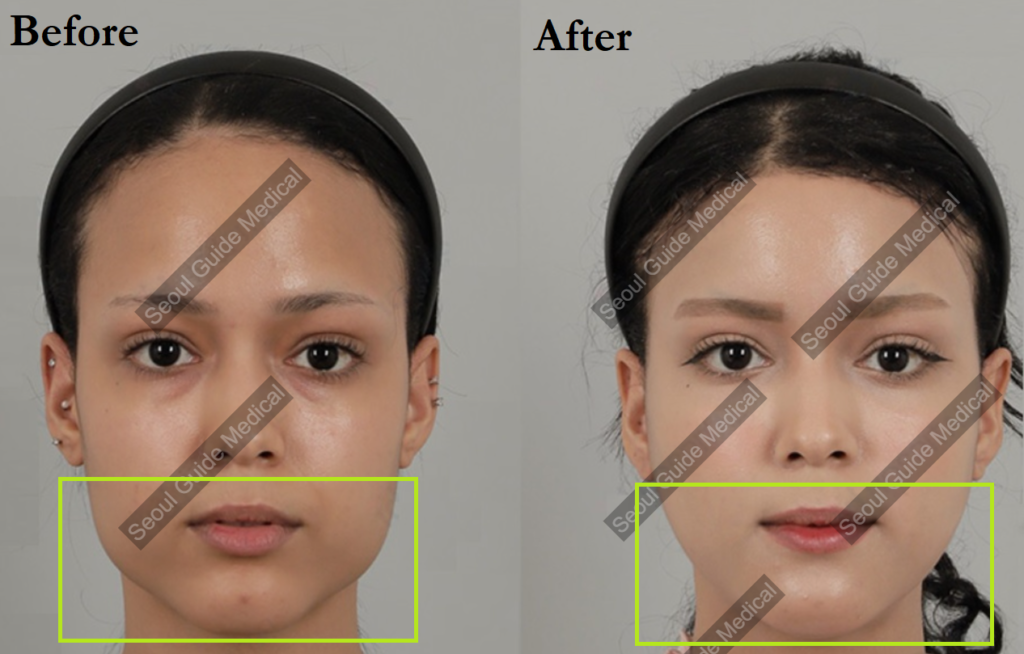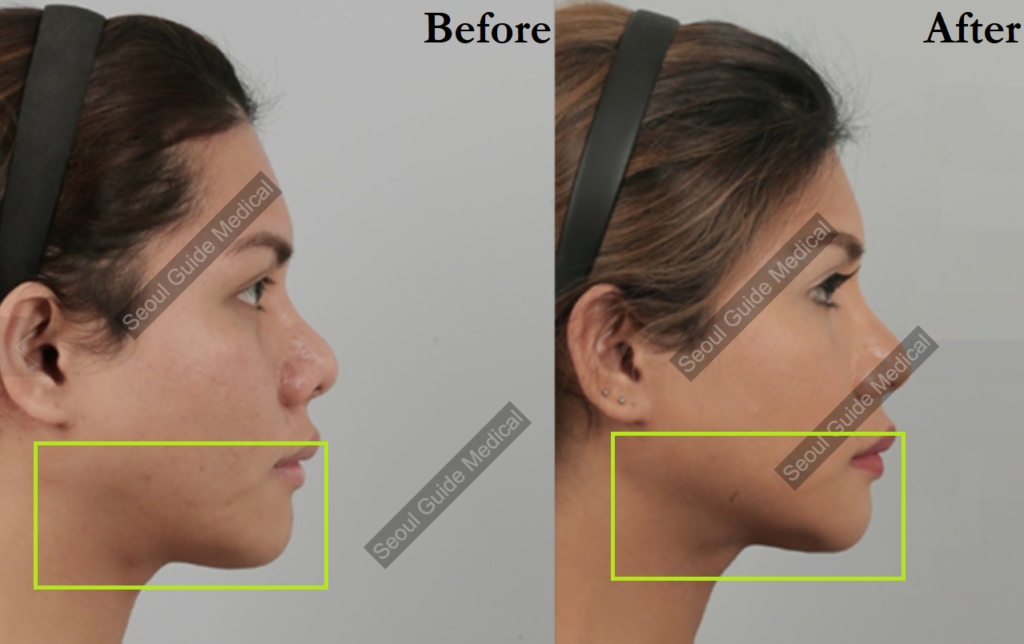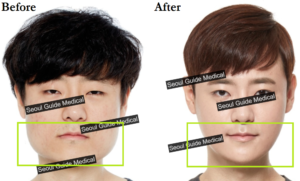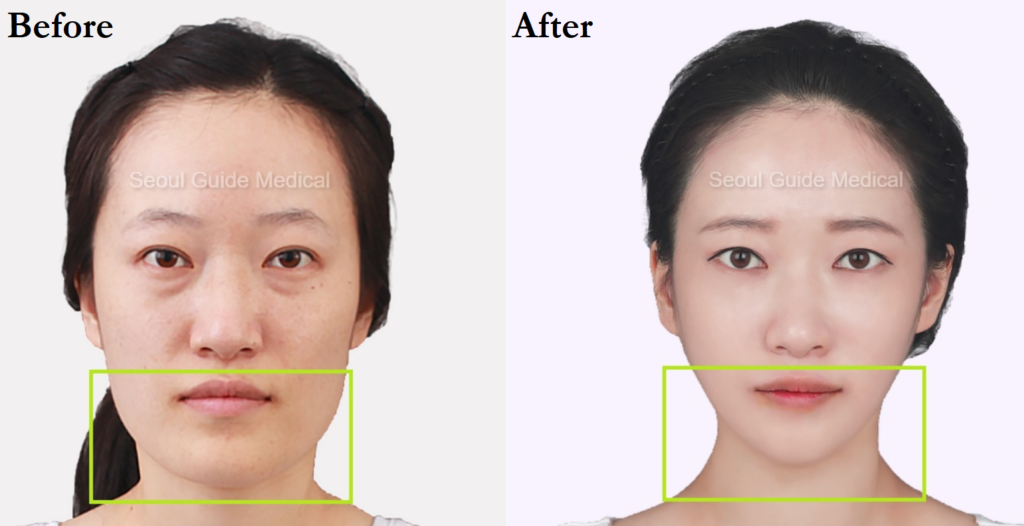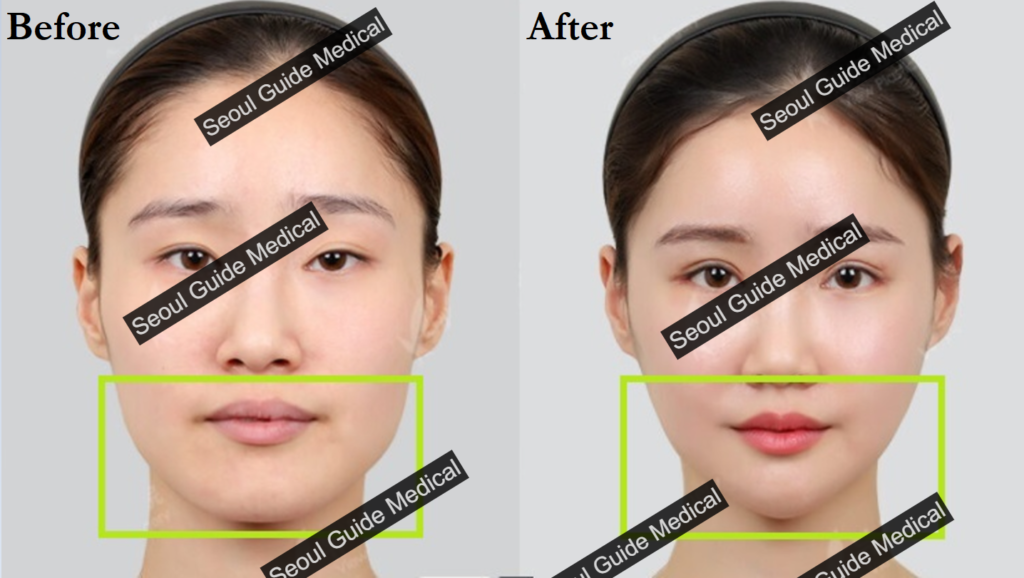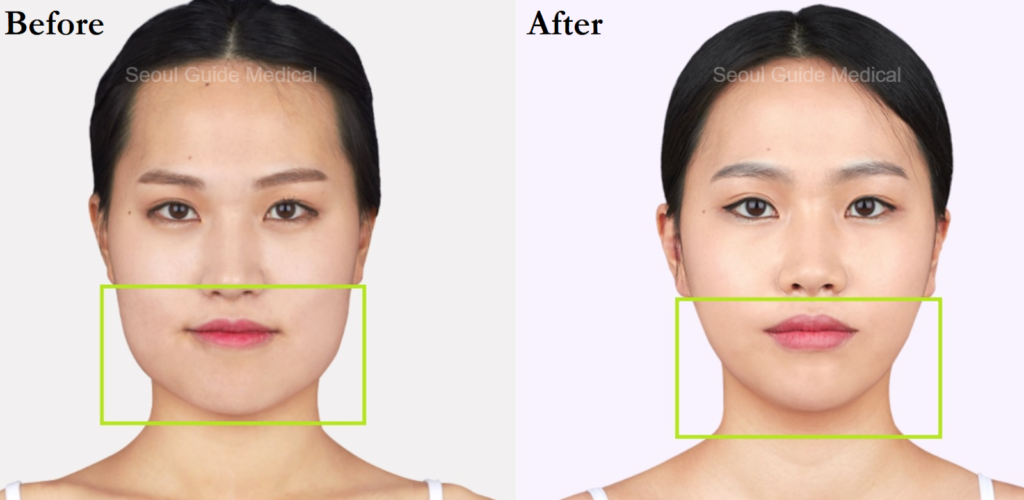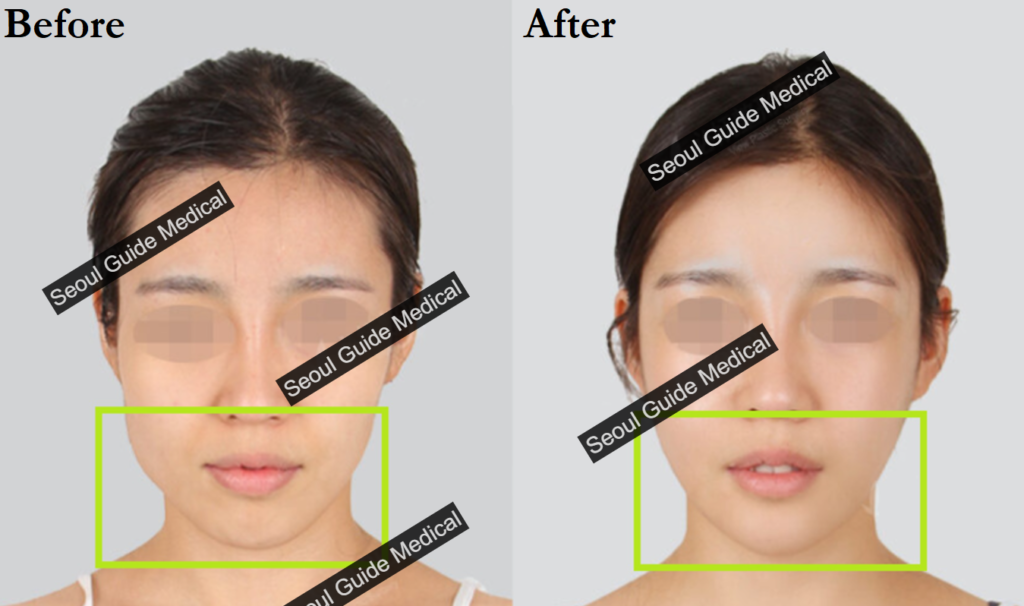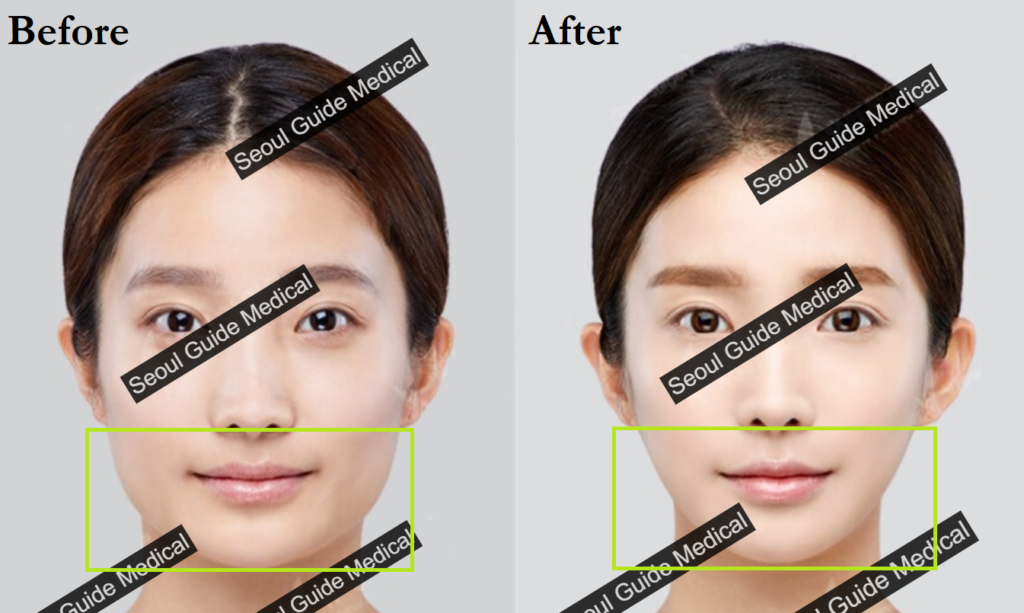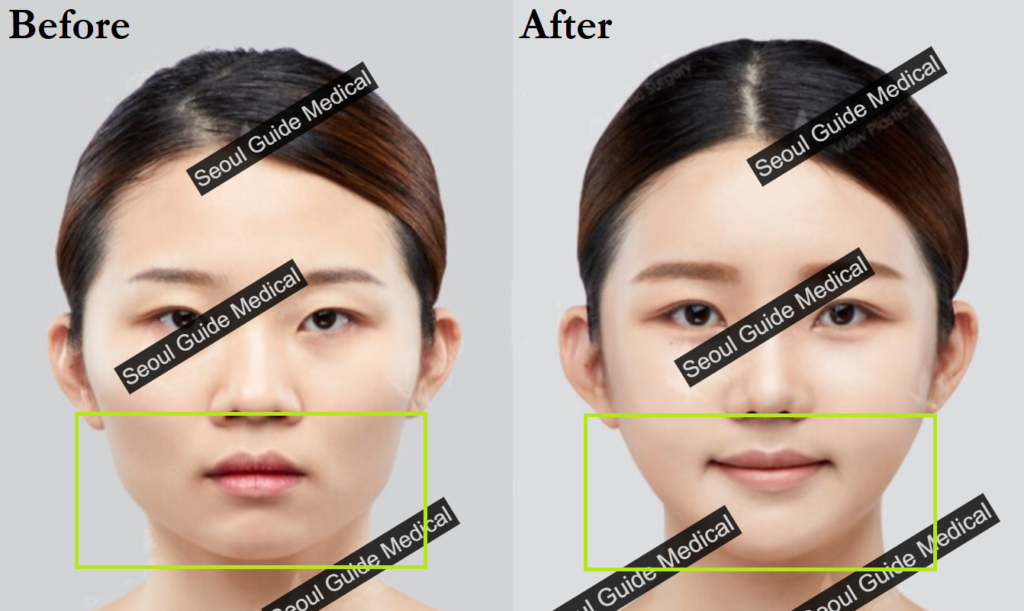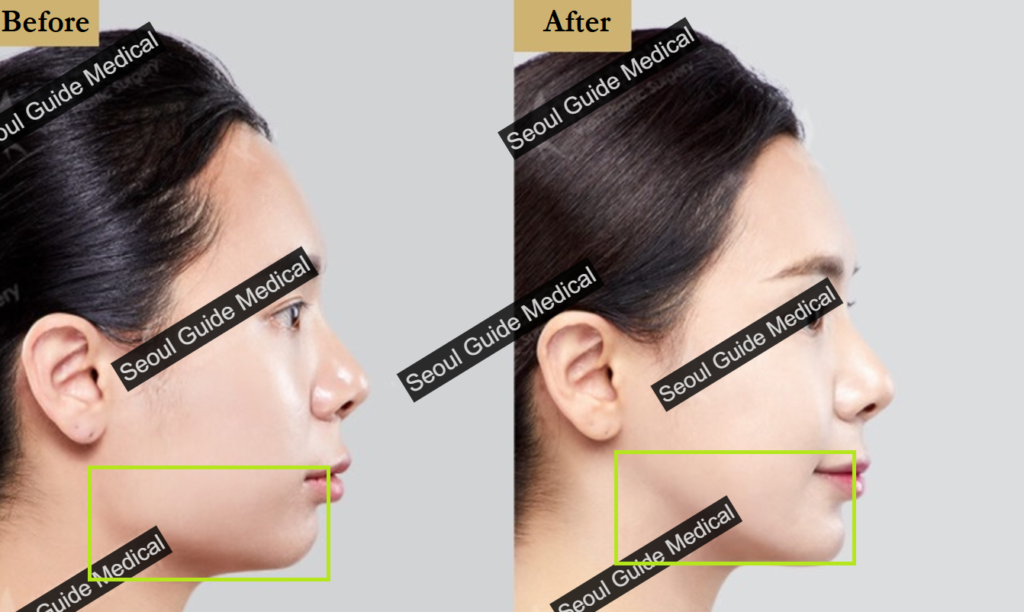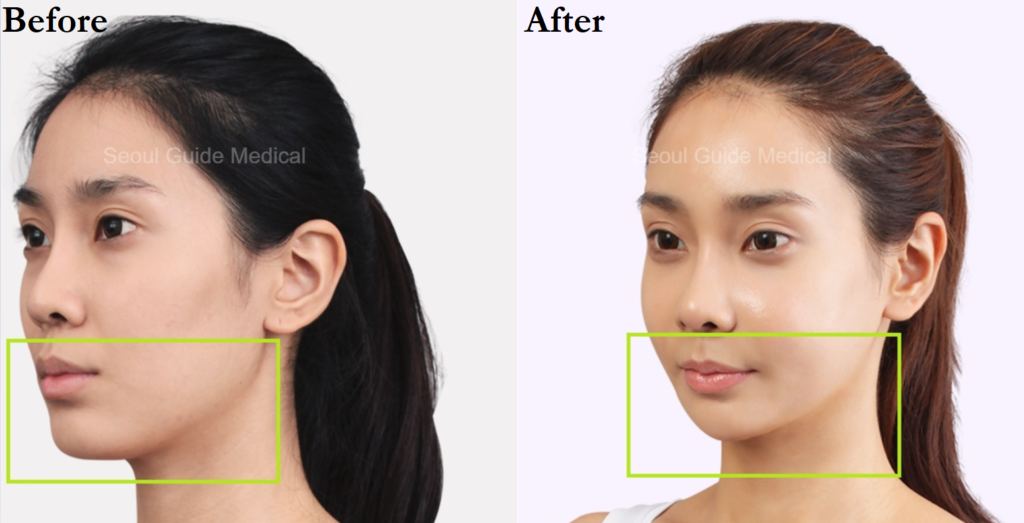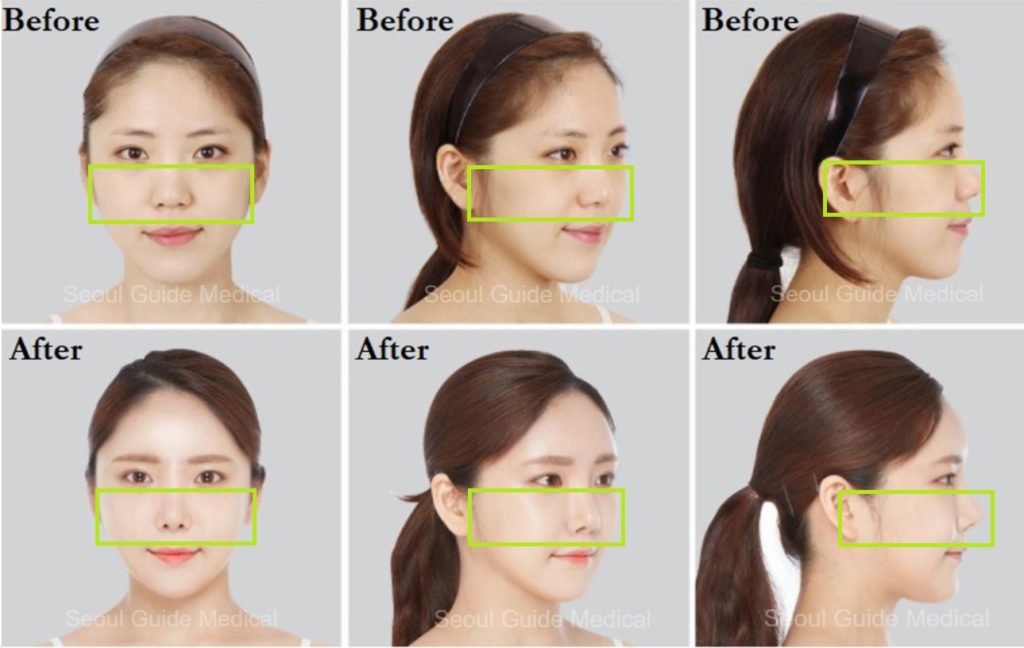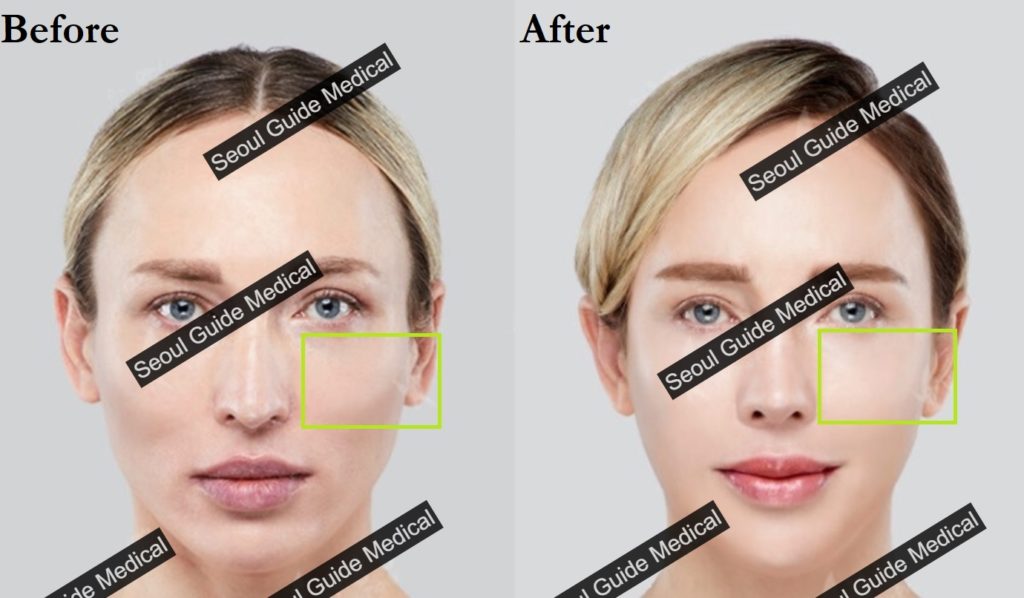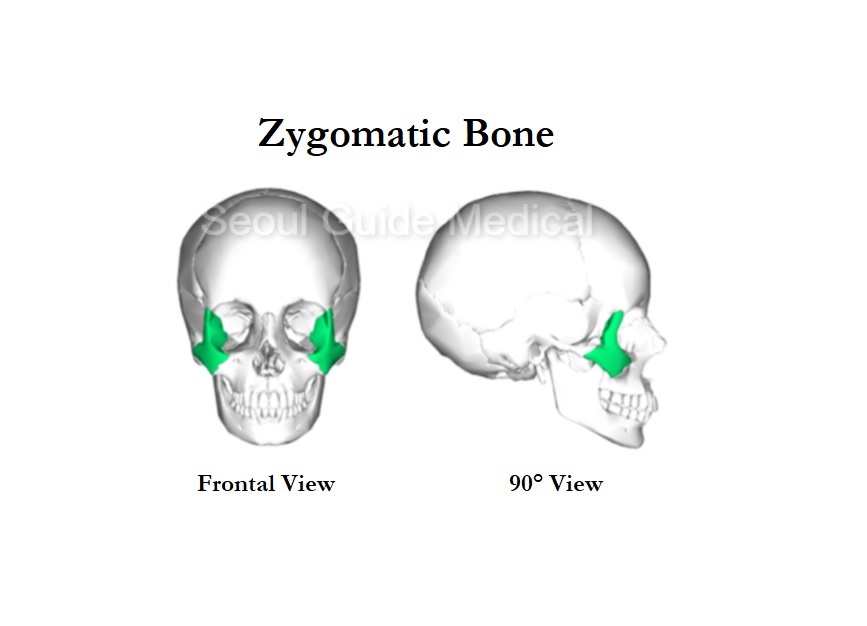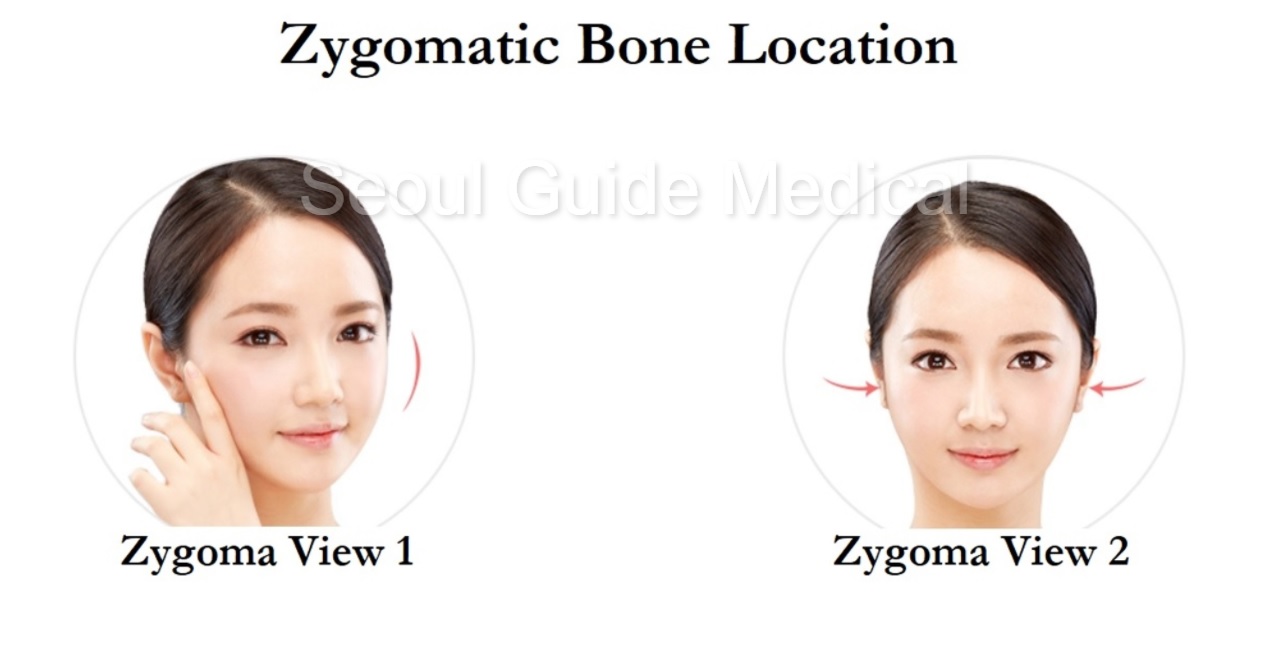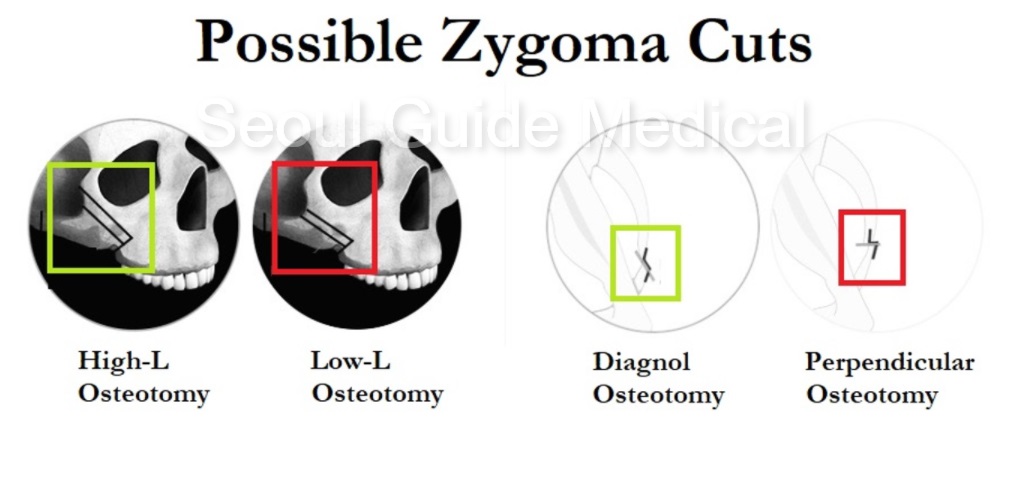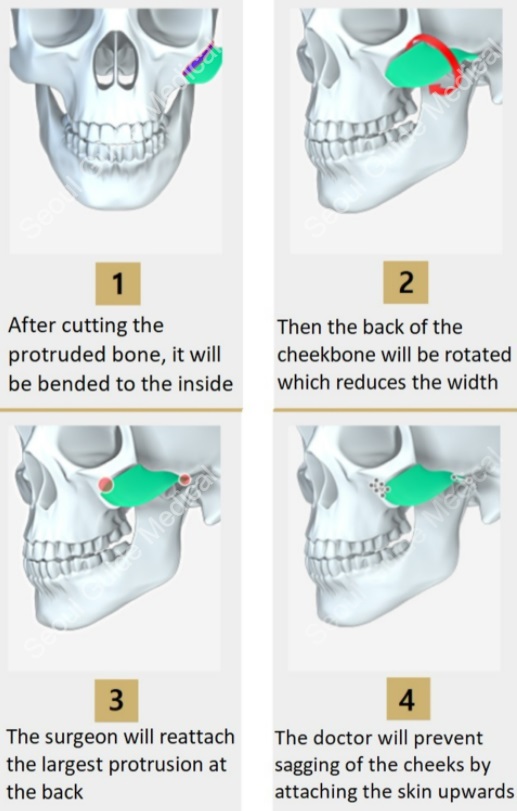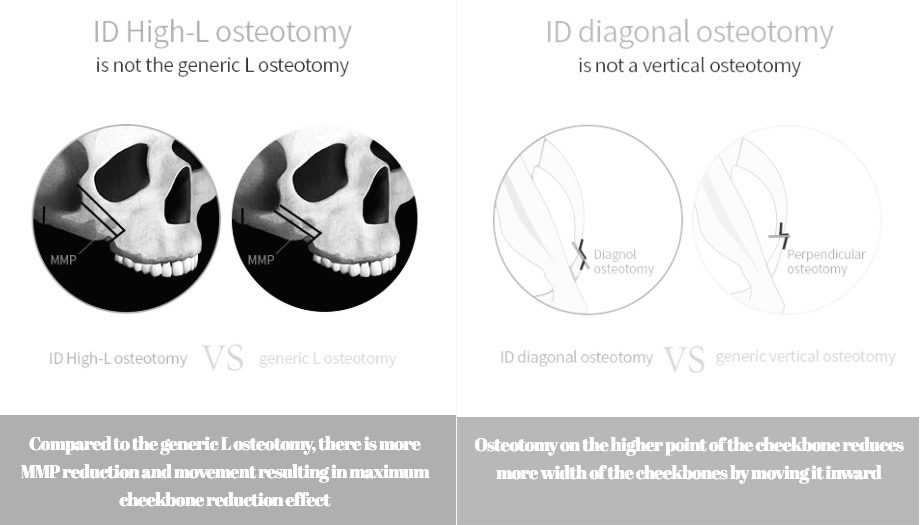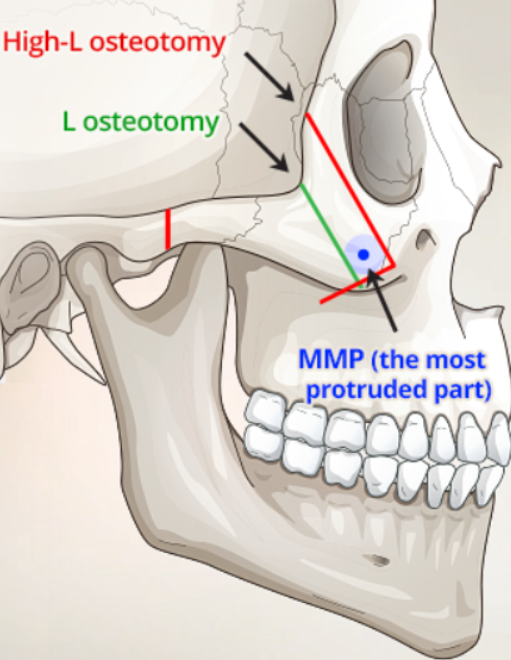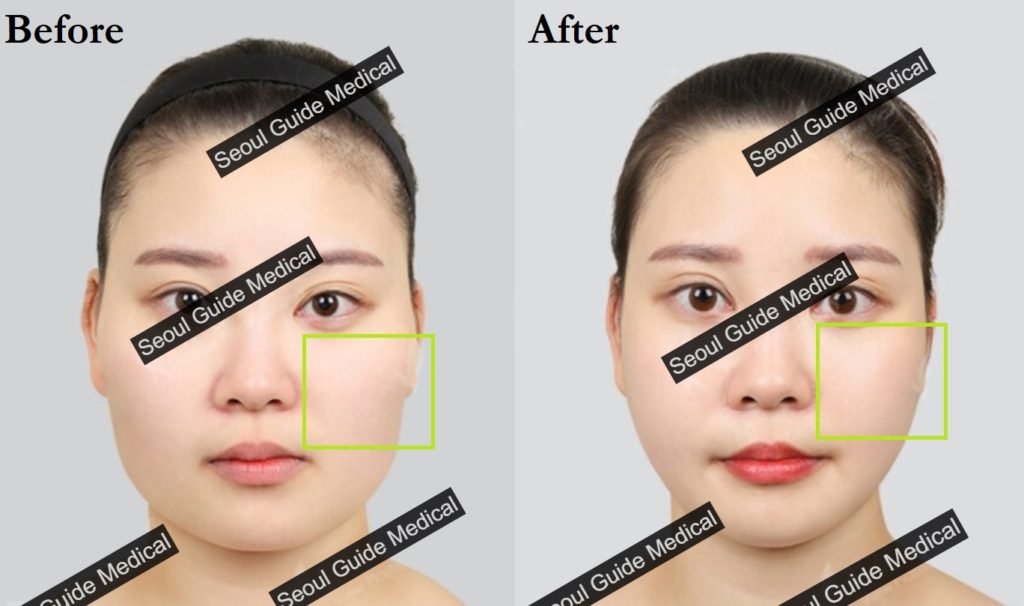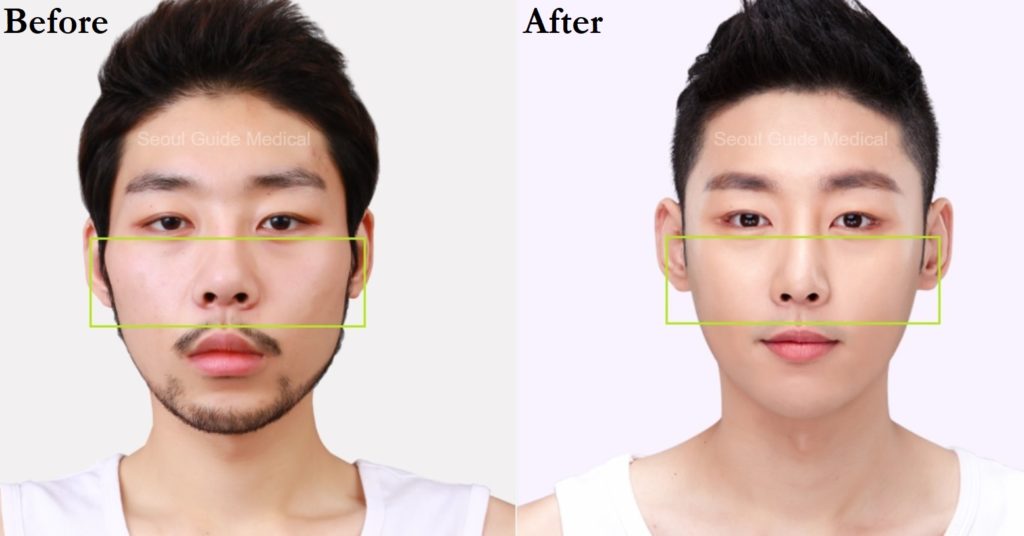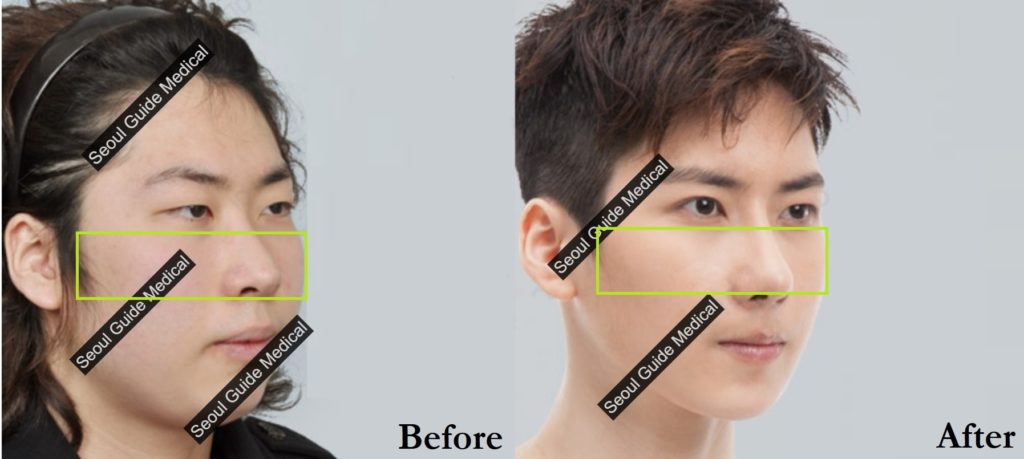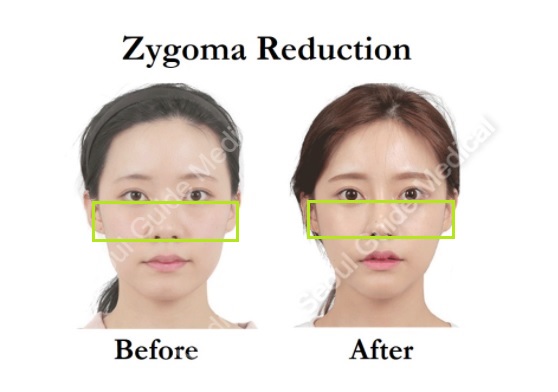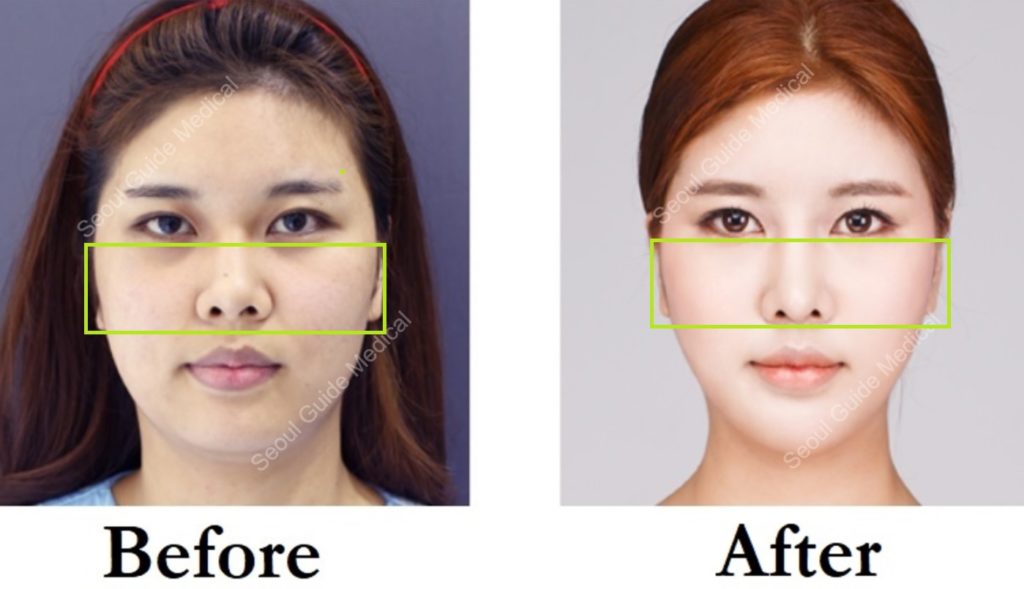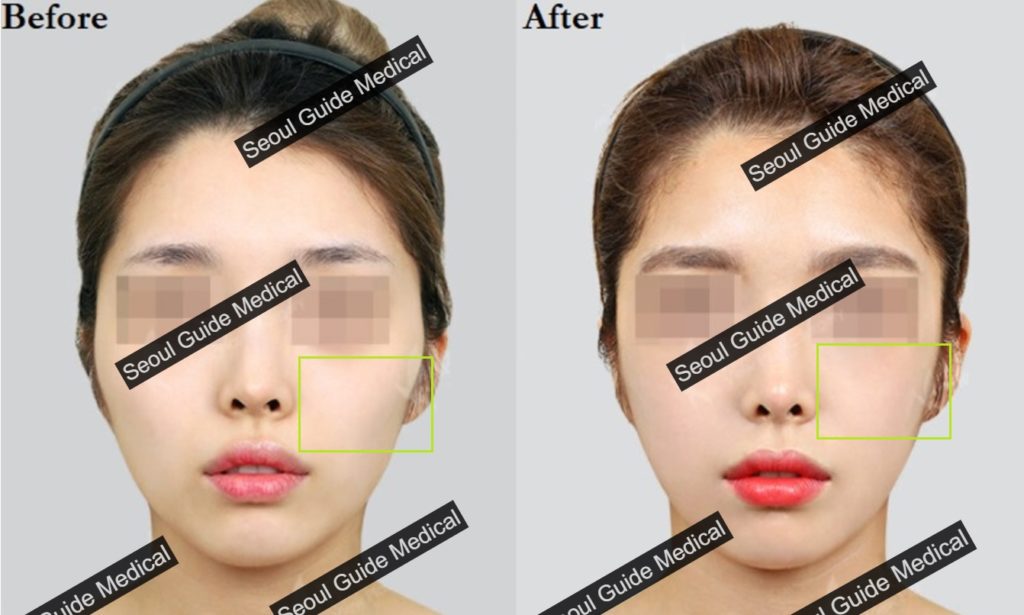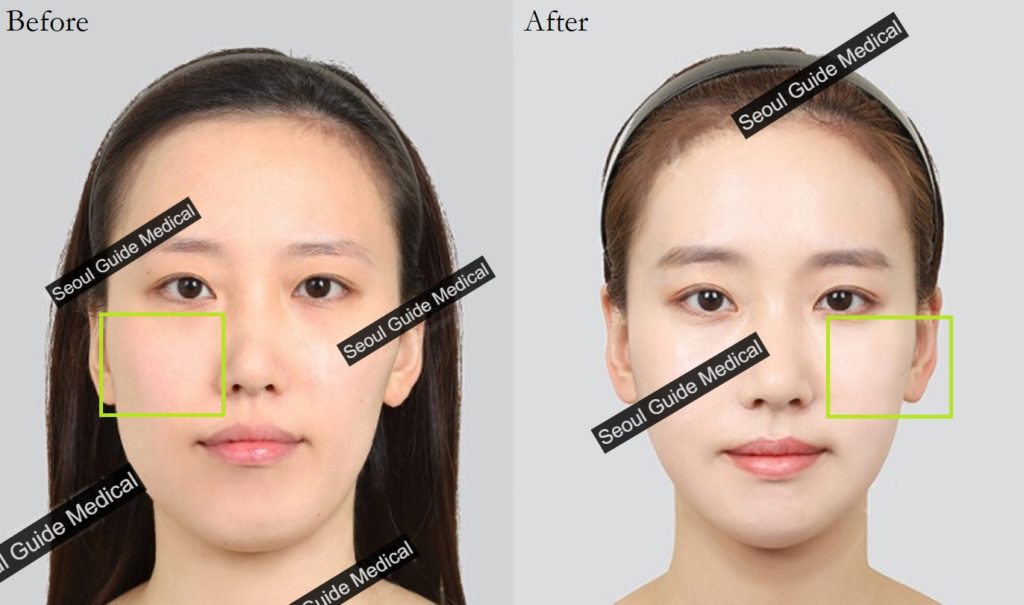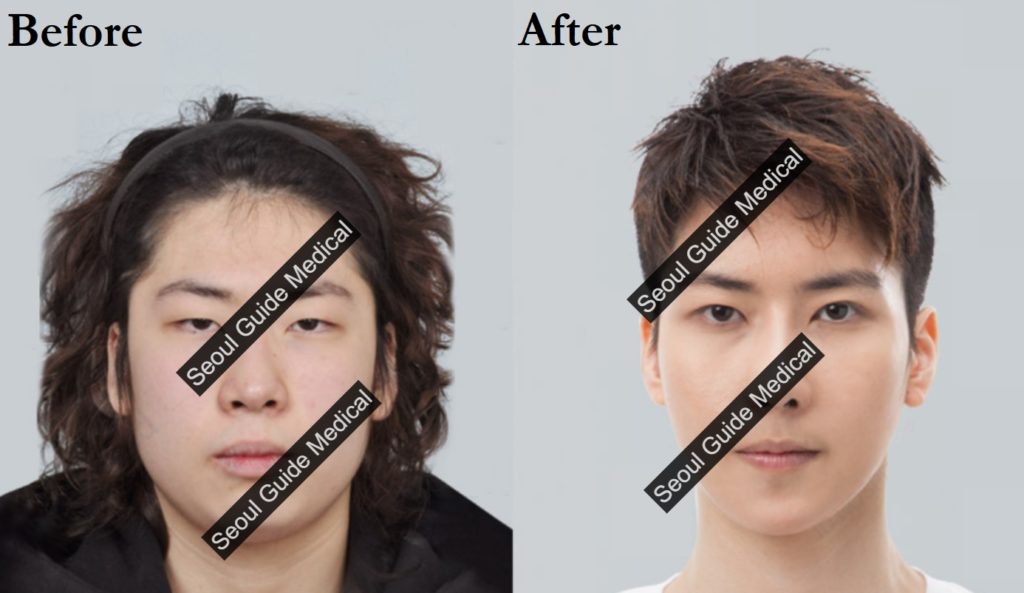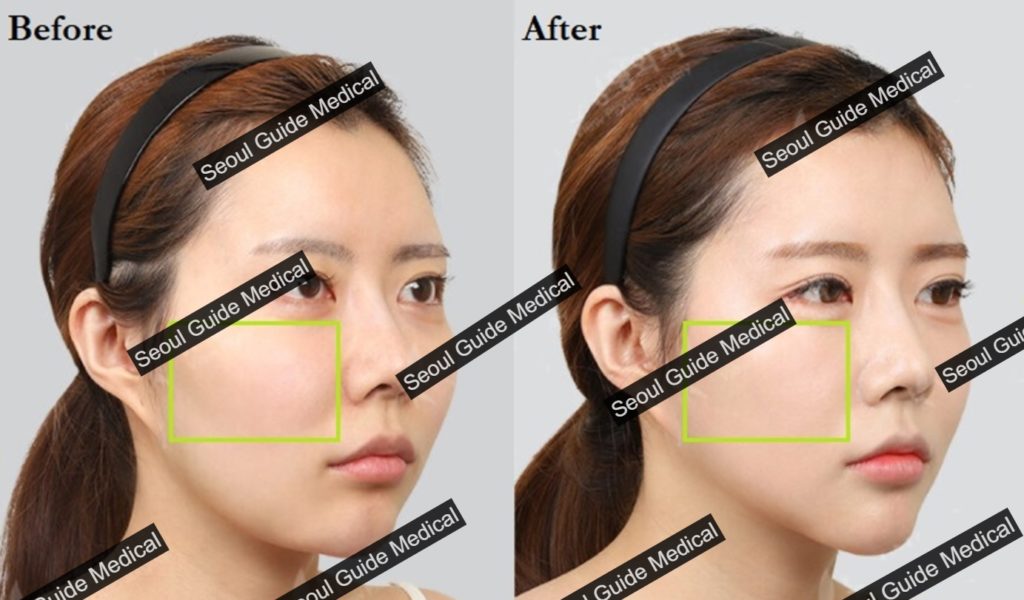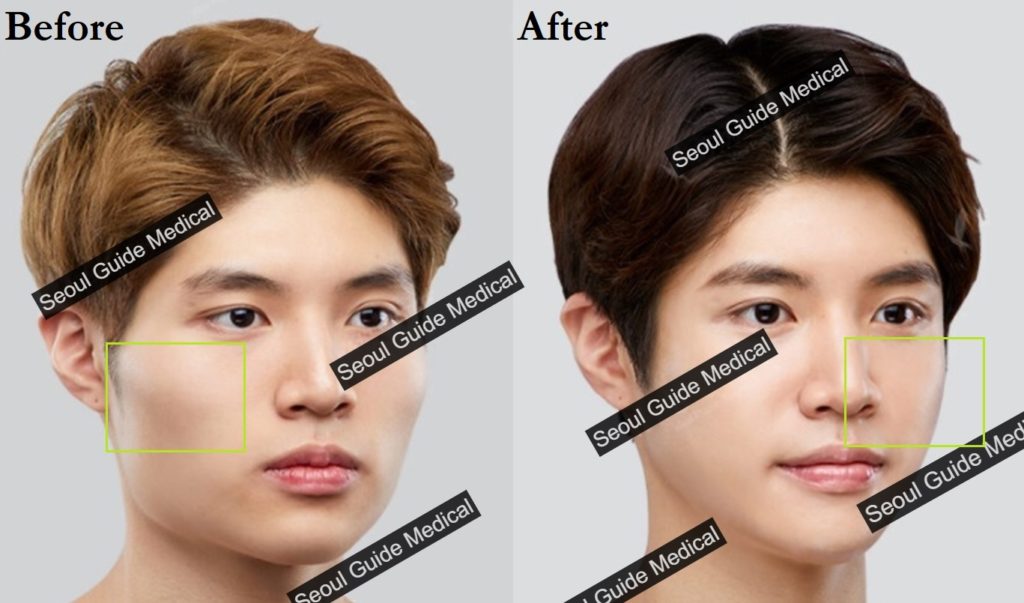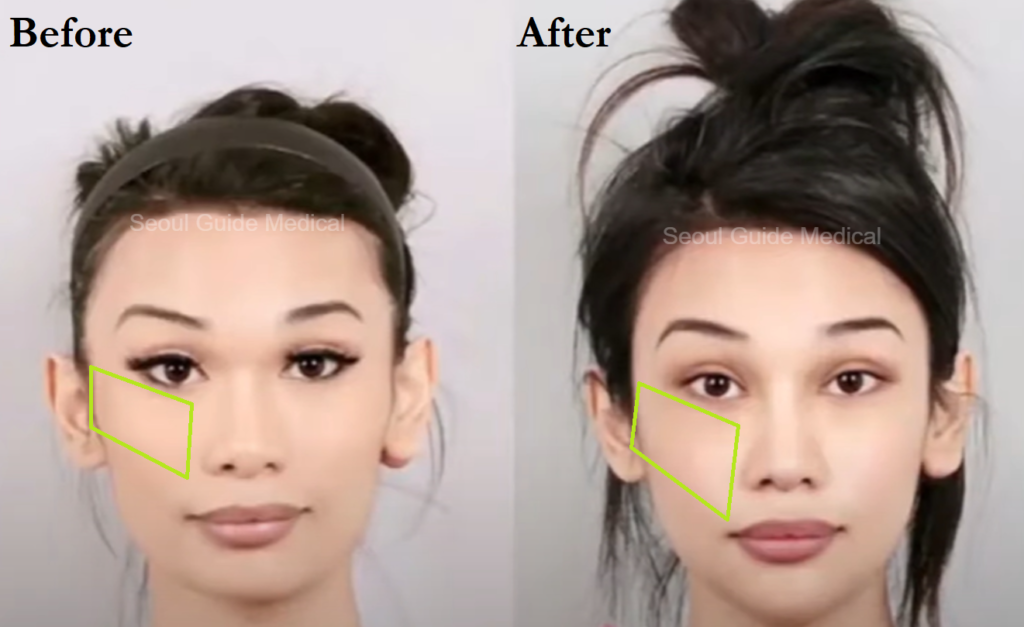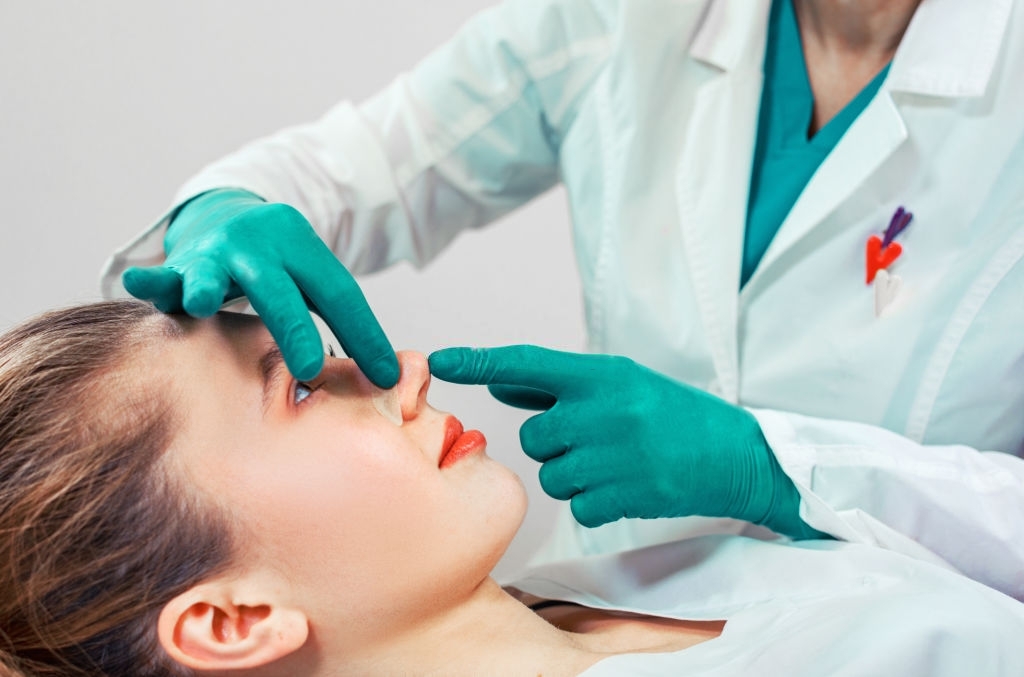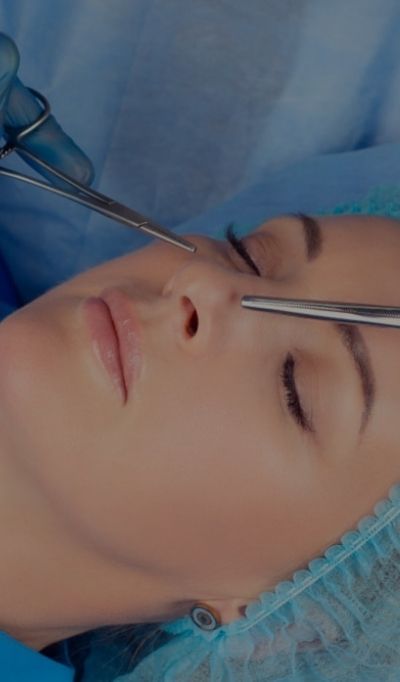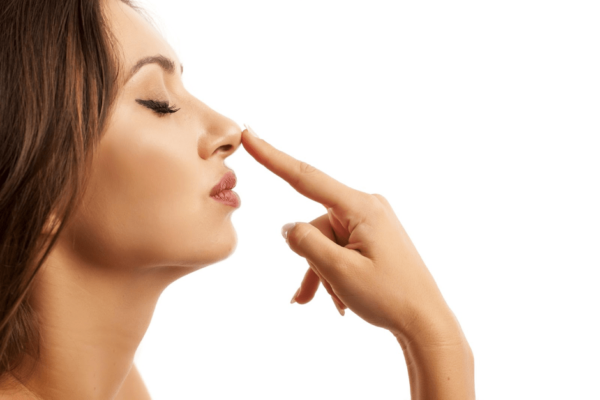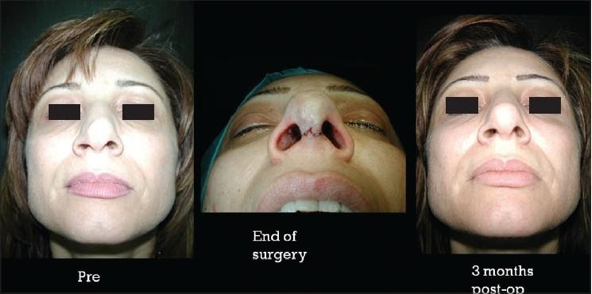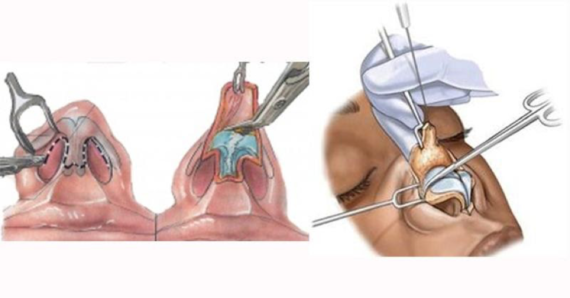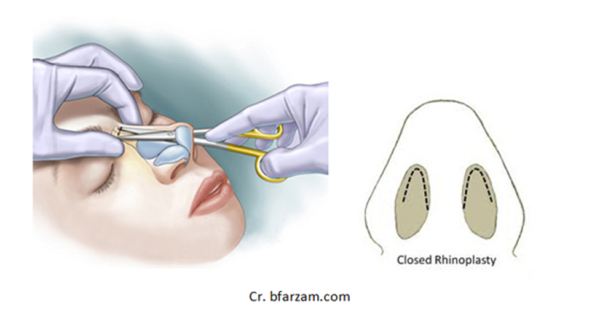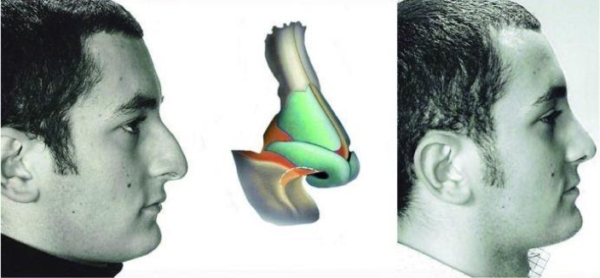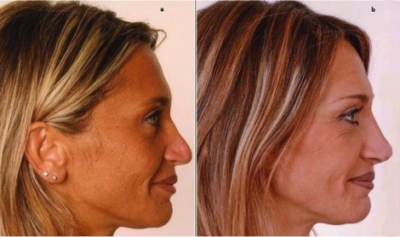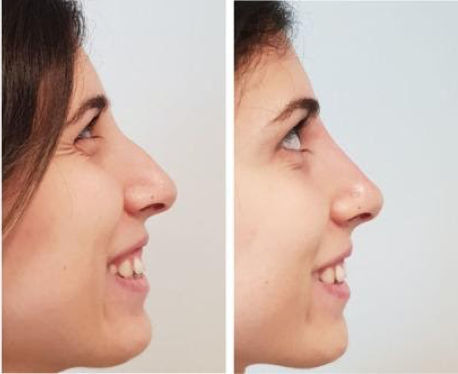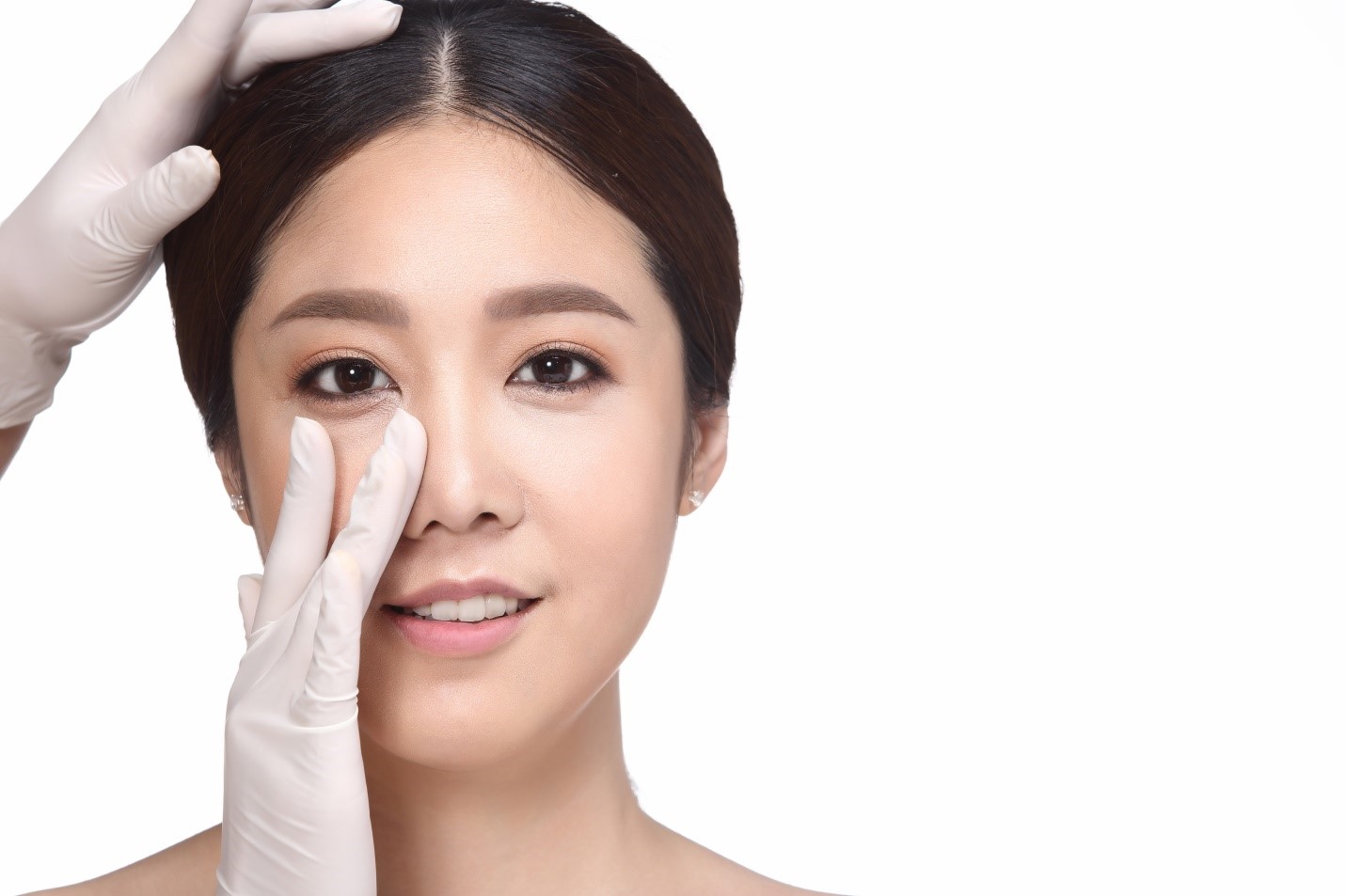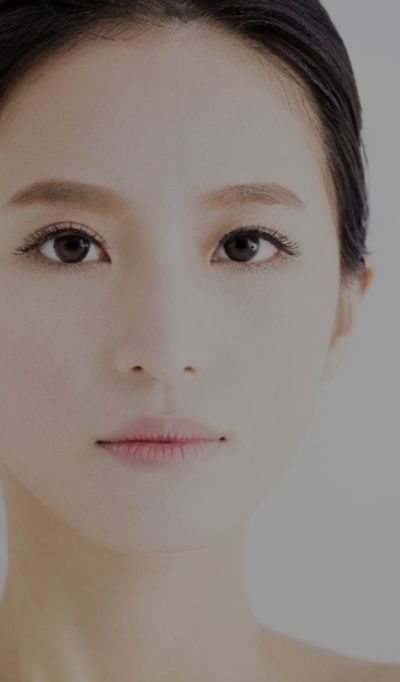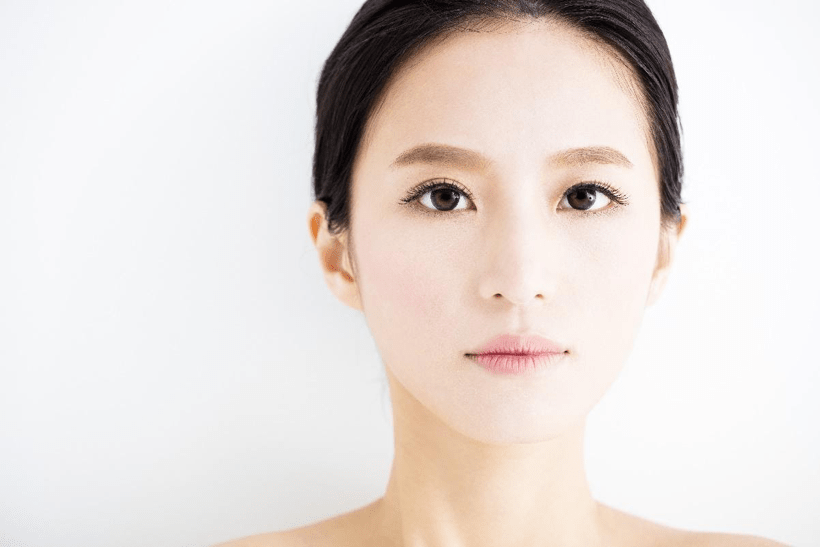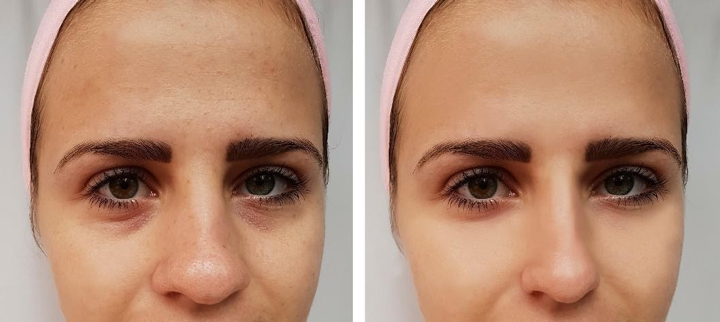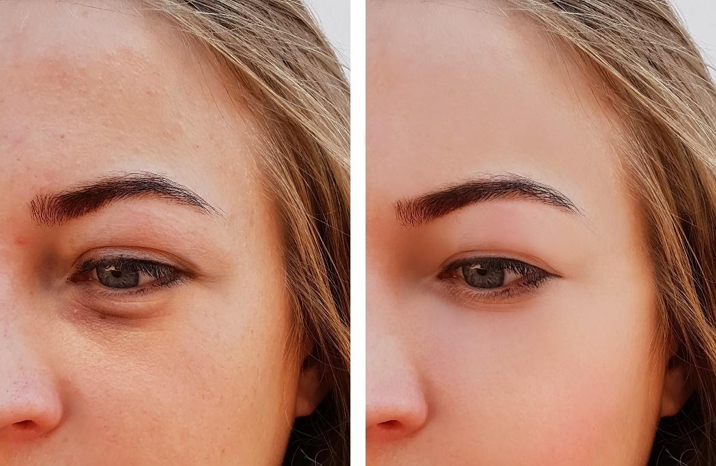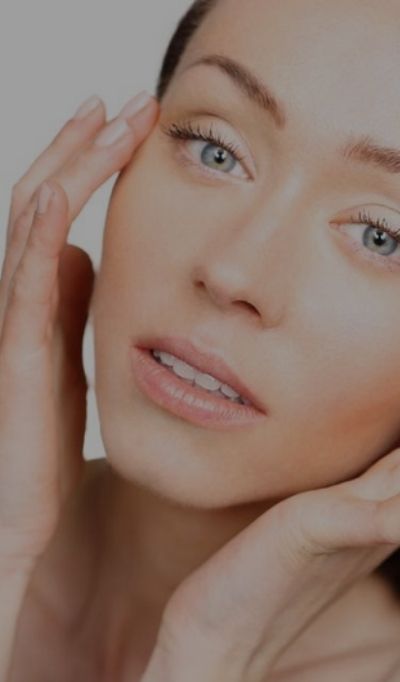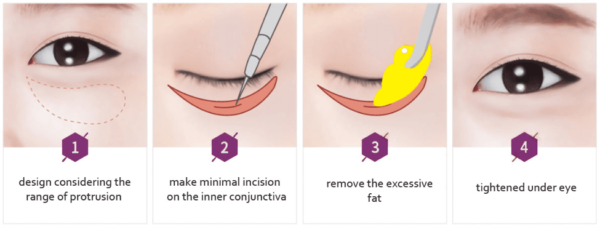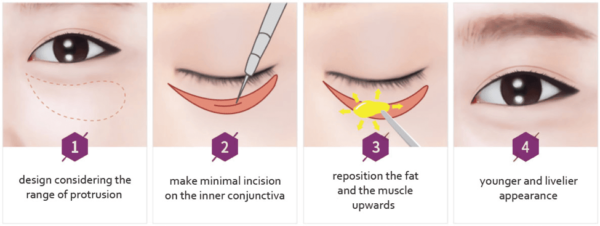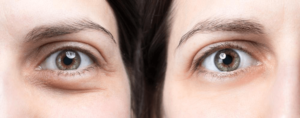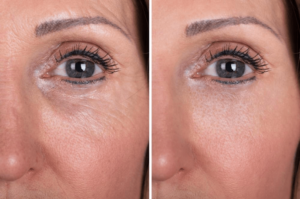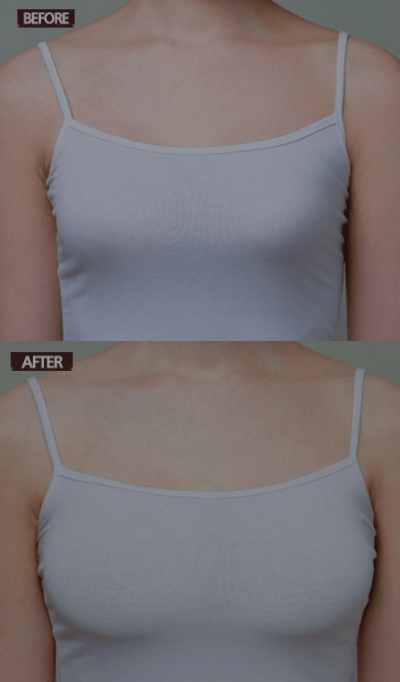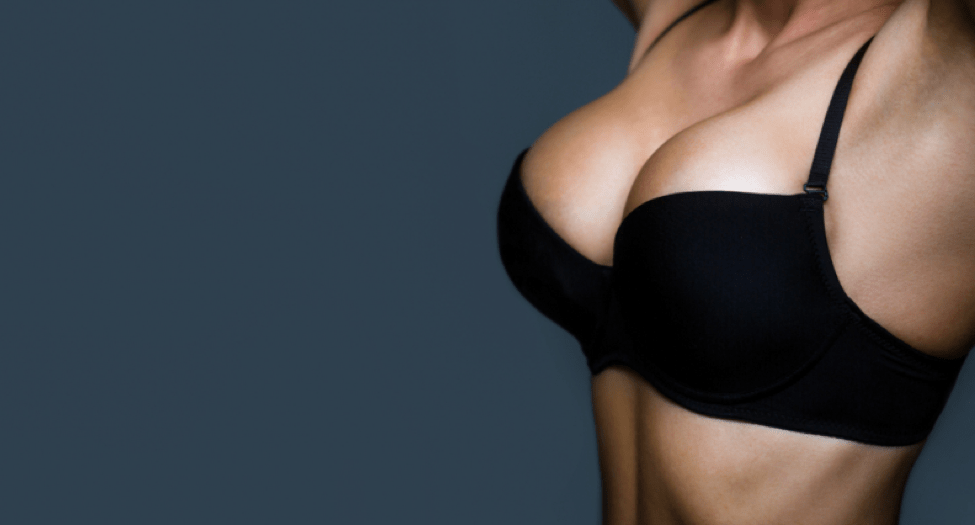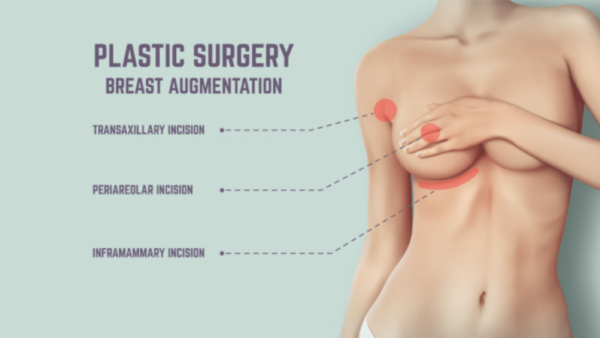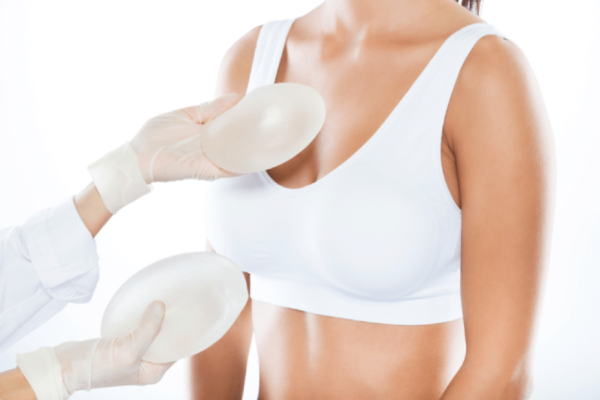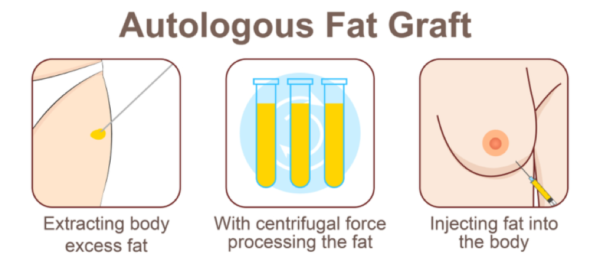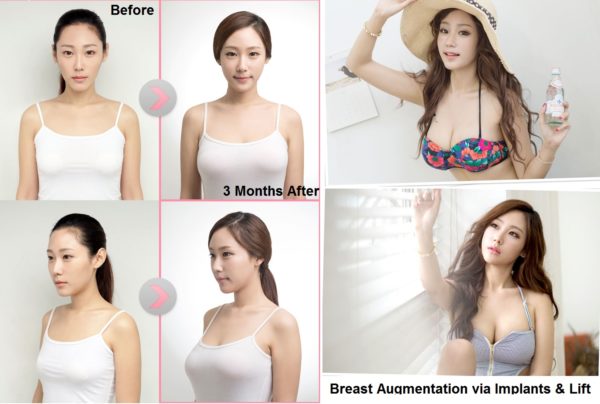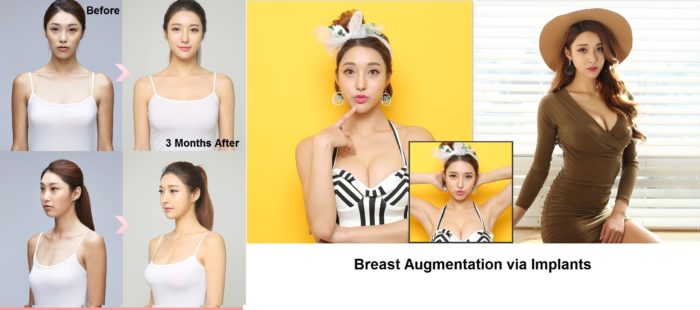

Have you always wanted a chin that suited your face better? Many people have undergone genioplasty to obtain a more symmetrical look and find that genioplasty or mini V-line surgery has helped them. Korea is the world leader in plastic surgery and the leaders in v-line (chin) surgery. Below is a step-by-step guide on what to expect when getting genioplasty in South Korea through Seoul Guide Medical.
What Is Genioplasty?
Genioplasty surgery, also known as mini V-Line surgery or V-Line, is where you alter your chin to create more harmony and symmetry in the face. V-Line is sometimes considered just surgery on the chin or it can be considered as surgery for the jaw and chin. Surgery for the jaw is known also as mandible jaw reduction or square jaw reduction. Mandible jaw reduction can have a short cut which does not touch the chin or a long cut which shapes the sides of the chin. For further improvements on the chin, a type of genioplasty procedure is needed.
Because everyone has different face structures, the type of genioplasty best suited for you will be recommended by a Seoul Guide Medical approved plastic surgeon, and the excellent staff here at SGM. Genioplasty can be used to improve abnormal dental bite positions, chins that are too tall or too short, chins that have asymmetry, chins that are misaligned, chins that are too large, chins that are too extended, chins that are too weak (retrogenia) and chins that are receding.
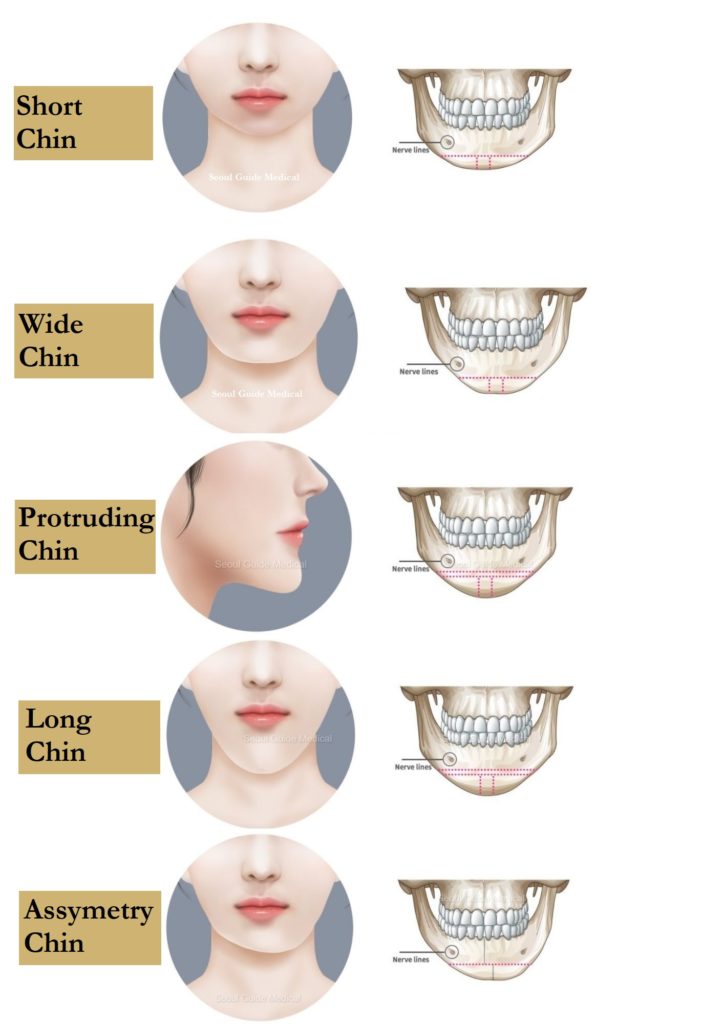
As you can see in the image above, different chin conditions require different surgical cuts.
The Procedure In Detail
Most genioplasty surgeries will take about 1 hour to complete, but this can be longer or shorter depending on your case. After the surgery, you may have to stay in the hospital for 1 night for observation and care, after which you can head to your accommodations.
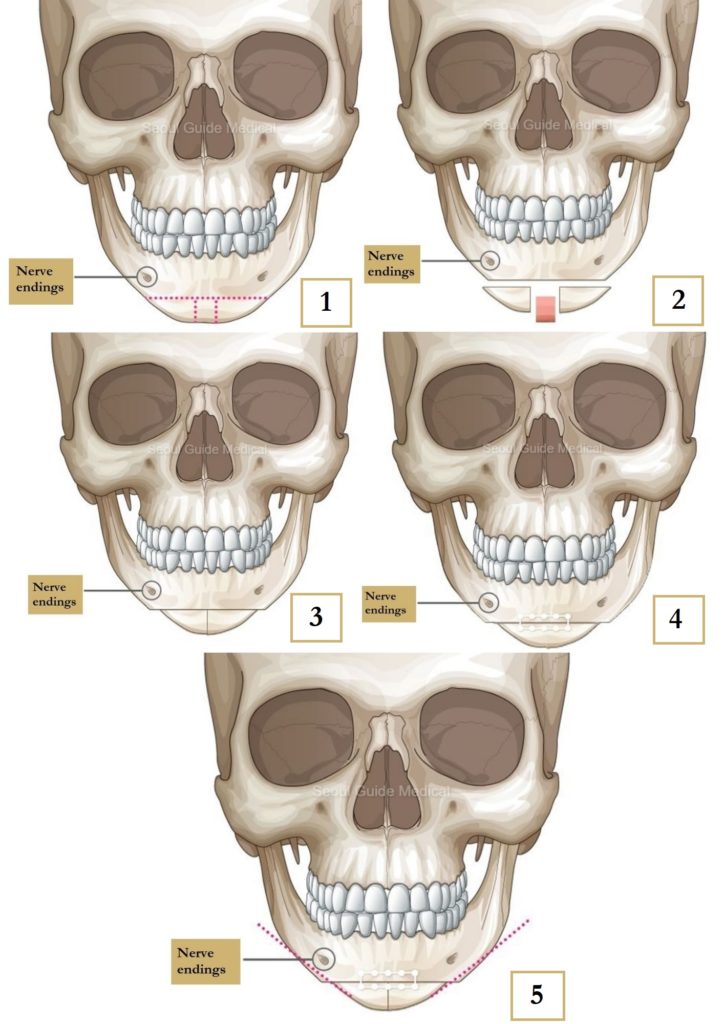
Before you undergo surgery, you will have online consultations with our team at SGM, an in clinic consultation with the doctor who will perform your surgery, fill out documentation for your surgery and have everything explained to you with the final confirmation coming from you. Once you complete your paperwork, you will be taken to the surgery room for preparation. The preparation can take anywhere from 15-40 minutes but it can take longer depending on the case. At this point you are awake and thinking happy thoughts. Once the preparation is done, the anesthesiologist will let you know it is time to go to sleep. This surgery is normally done under general anesthesia, which means you will be asleep during the surgery and not be able to move making the procedure safe. Once the surgery begins, the following procedure will take place (please note it can change depending on the case):
- The plastic surgeon cuts along the border of the lower jaw and the inside of the lower lip, inside the mouth. There is no external cut and no external stitches afterwards.
- He/She then makes an incision in the layer of softer tissue to gain access to the chin bone.
- When the doctor accesses the chin bone, he/she makes a small vertical cut in the chin, using it as a referencing point during the operation.
- Horizontal osteotomy is performed below the bottom teeth. The surgeon can change the height of the chin depending on how high she/he makes the cut. If you want your chin to be smaller, the surgeon can also remove a piece of bone to make the chin smaller.
- How you want your chin to look or what is needed for your chin determines the outcome of this next step. Here the bone can slide forward, backward, or sideways. Any rough edges will be filed away, and the doctor checks the new alignment.
- The next step would be to reattach the chin bone to the jaw with screws and possibly a plate (more on this a bit later).
- The plastic surgeon closes the wound with stitches (often dissolving stitches) and places compression tape over the front and sides to minimize swelling.
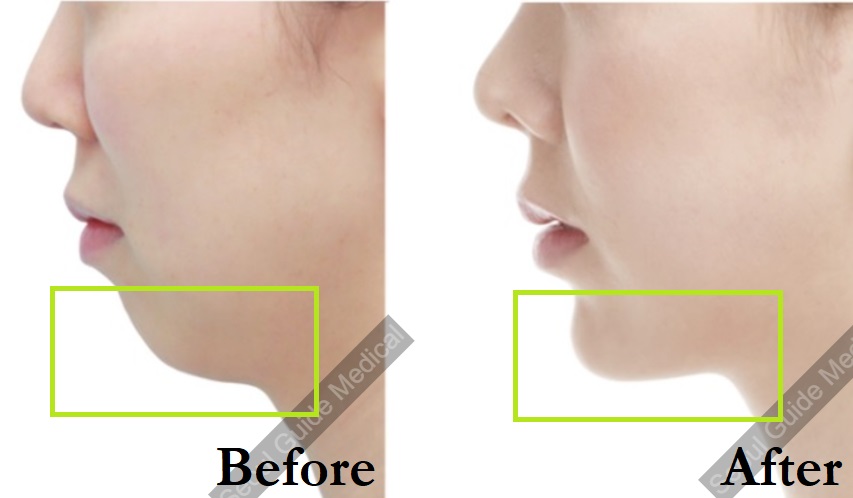
Different kinds of cuts
Different kinds of cuts result in different face shapes. You may need one or multiple cuts to get the look that you want. Your treatment plan has to be customized. What type of cut you’ll need for your chin or face shape and your wants and needs will all be discussed in the consultation with the doctor. Our highly skilled staff at Seoul Guide Medical will guide you through everything you need to know so that you’ll have the most comfortable experience possible.
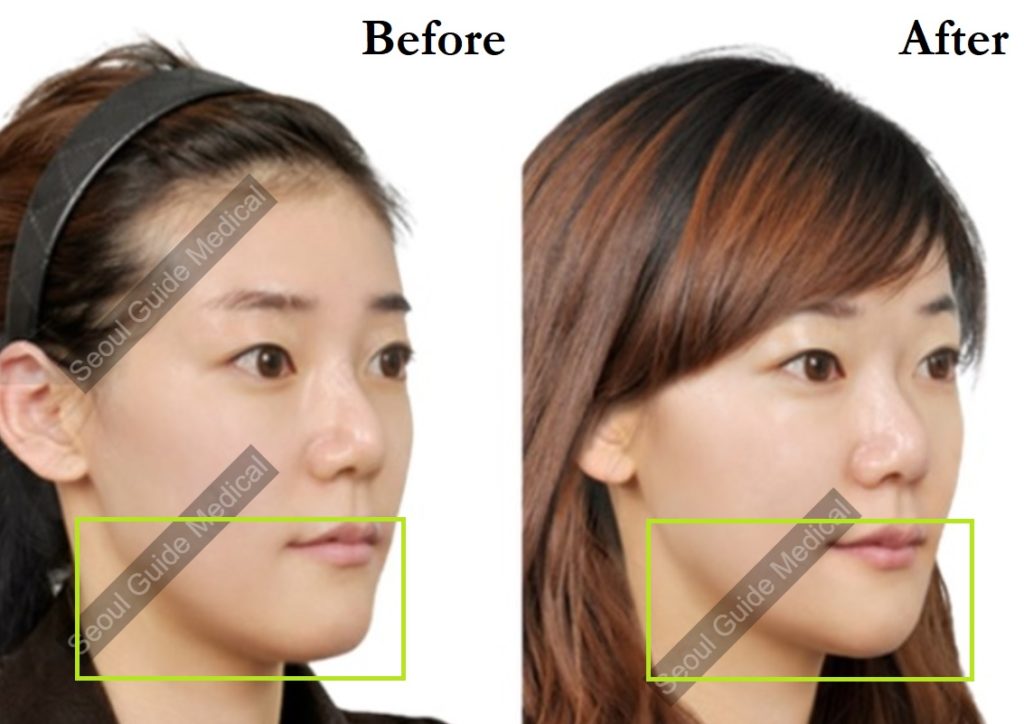
In this type of surgery, your chin can be altered to form a better balance and symmetry in your face. The plastic surgeon may shape your chin in a particular shape to obtain this. What shape this is, depends on what your natural face shape is. Therefore, a plastic surgeon can make different kinds of cuts. This can be:
- Y-osteotomy
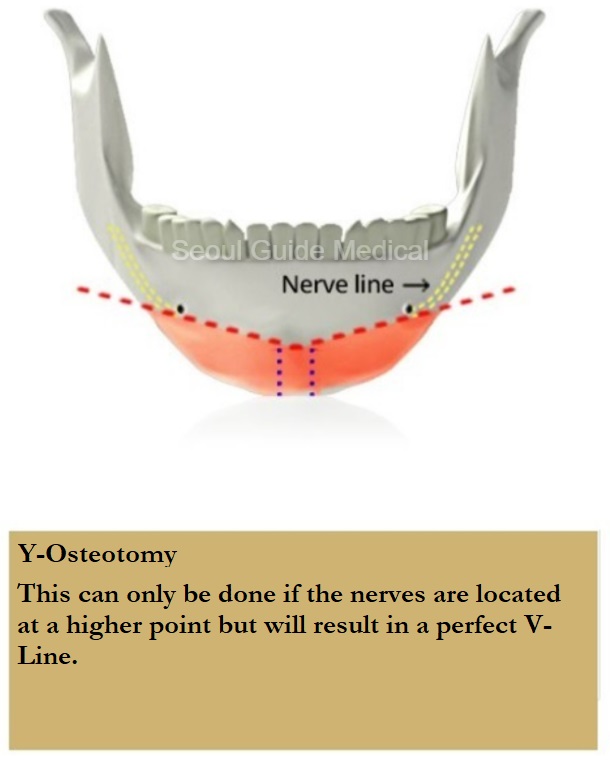
- Pyramid-Osteotomy
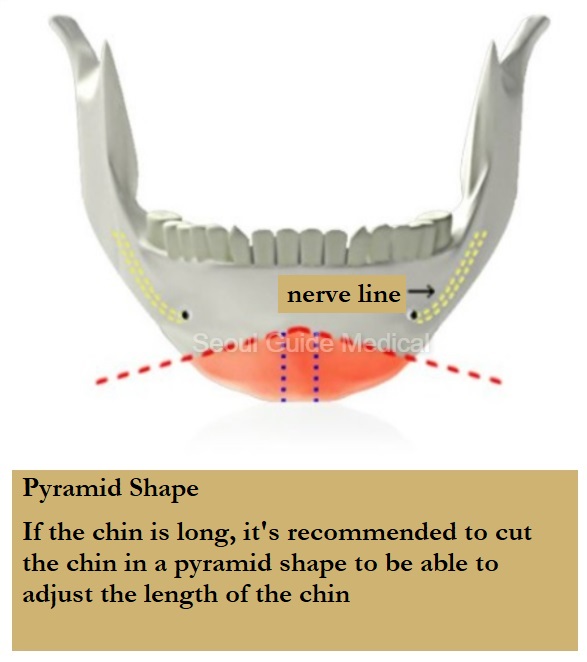
- W-Osteotomy
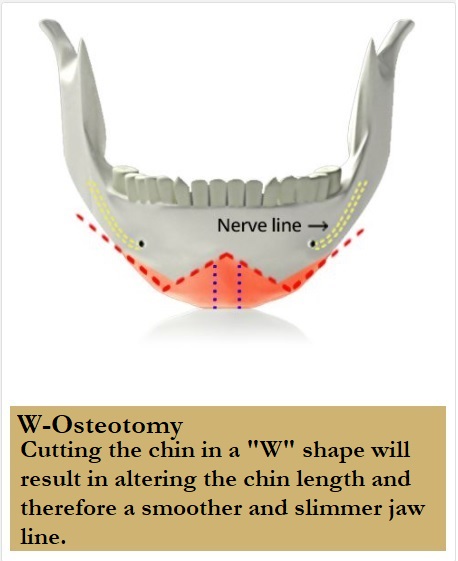
- M-Osteotomy
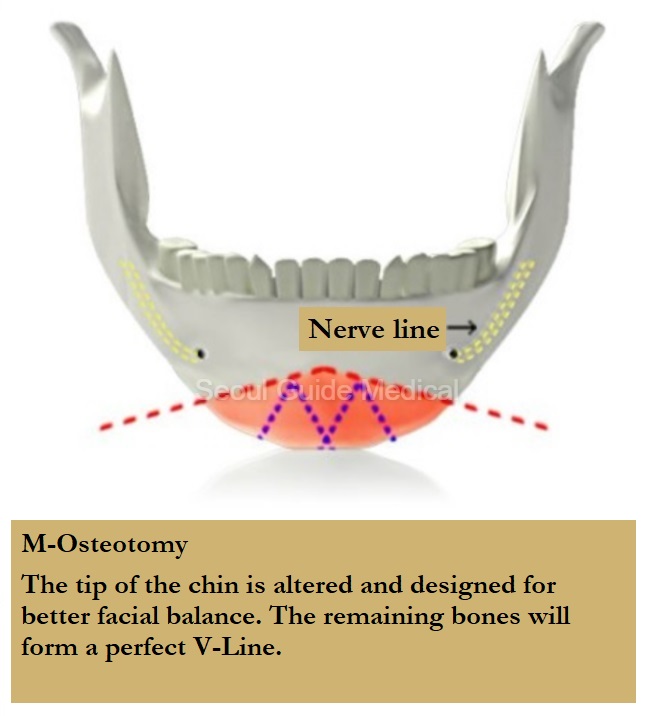
Before and After Photos
To get a better sense of what is possible, you can see before and after photos. The change can be slight or major. It is really up to your needs and wants along with your own body’s limitations.
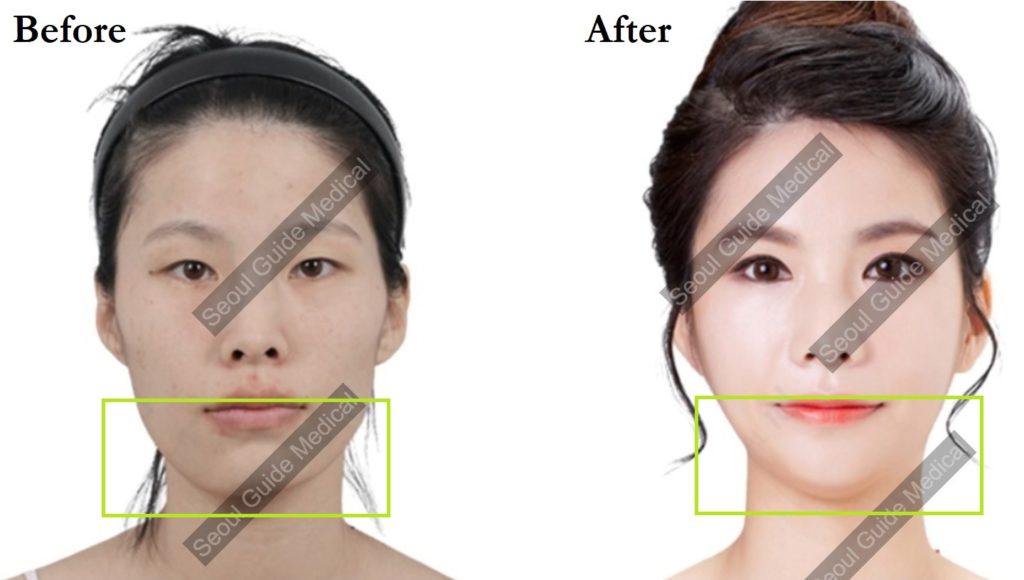
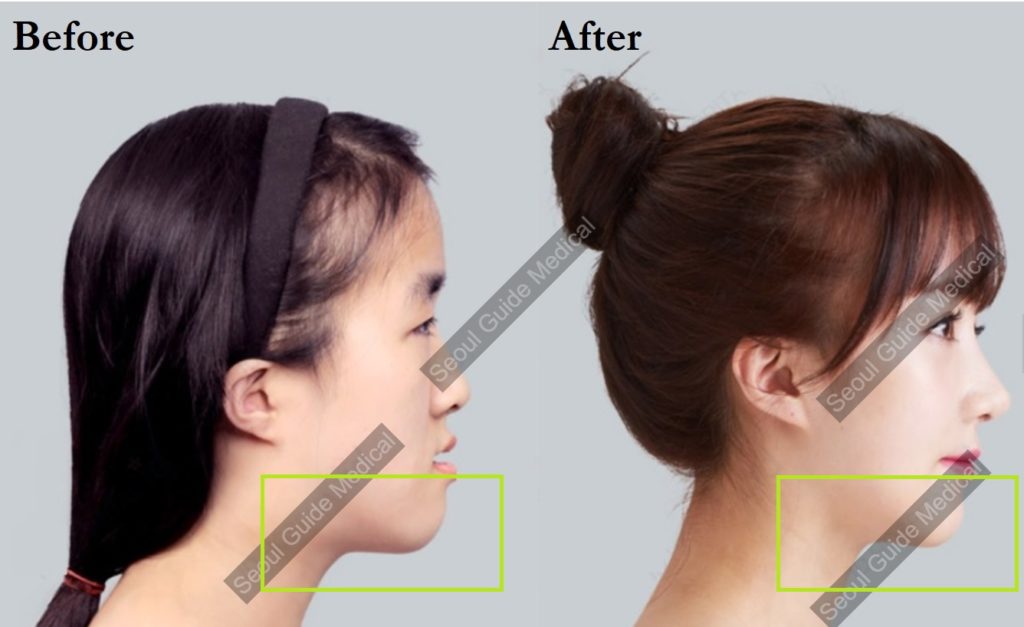
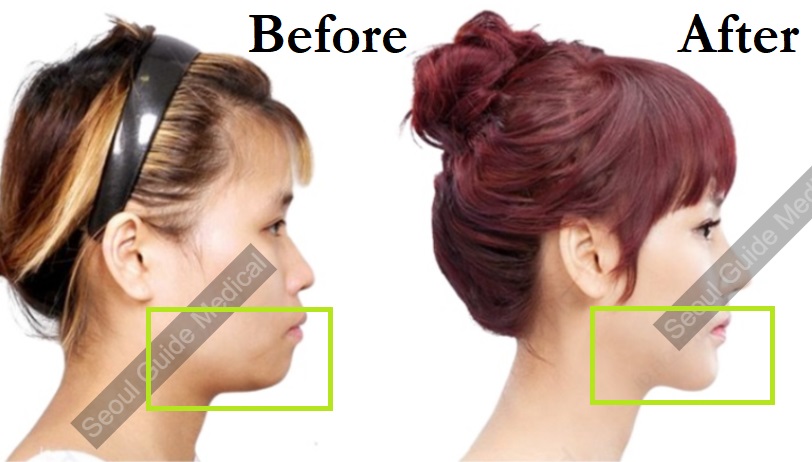
Recovery Time and Process After Surgery
After the surgery, you may have to stay in the hospital for 1 night to ensure everything goes according to plan and there are no complications. The doctor will check your condition the next morning, get an antibiotic and deswelling injection and you will be released.
- Usually, 3 days after the surgery, the second check-up will follow, where we will disinfect, check the progress, and provide you with a shampoo service, since washing your hair can be difficult after such a surgery.
- 1 week or less later, de-swelling and cell regeneration is done using laser light therapy.
- 10-14 days later stitches are removed for those but some people may have dissolving stitches which do not need to be removed. Radio frequency or ultrasonic devices may be used at this time or earlier to speed up the healing process.
- At this point you are free and looking much better as swelling has gone down. If you meet a new person, they may not know you had surgery at all but you will most likely look at your chin and still feel swollen. This improves more after 3-4 weeks. After 3 months you can consider it 90-95% healed and after 6 months it is 99% healed in most cases. Internal healing takes place fully over 6-12 months usually.
Genioplasty, like any surgery, is going to take some time to completely heal. For internal healing, it’s a lot slower as stated above, but the swelling recovery is faster.
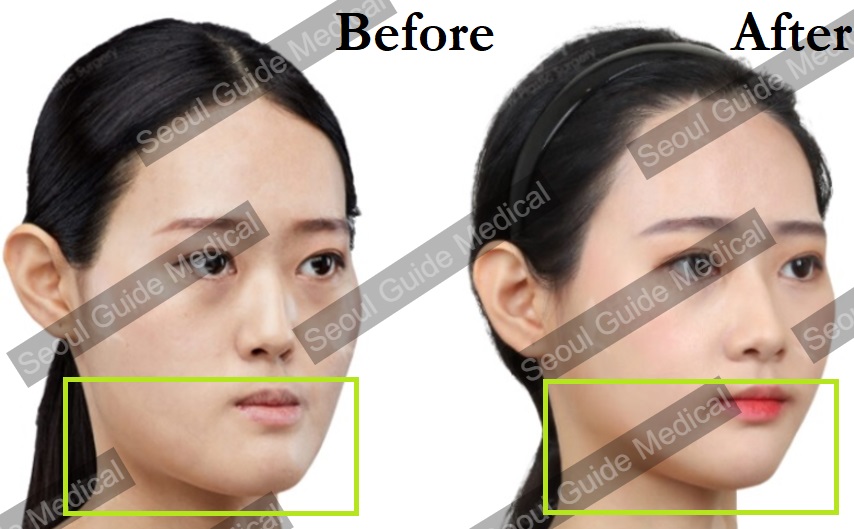
Is It Right For Me?
In this plastic surgery article we have shown the different types of cases that qualify for genioplasty but to be suitable for this surgery you have to hold the right expectations. There is no procedure that will give you 100% perfect symmetry and fulfill every last bit of expectation because everyone is limited by their own body. In fact, at any plastic surgeon anywhere in the world you will most likely sign a waiver stating that perfect symmetry is not guaranteed and that the clinic has explained to you what is possible in your case. Basically, you should be looking to maximize what is possible for you. Yes, you will look better. Yes, you will maximize your look. Yet, you should accept that there are limitations and those limitations will be explained to you during your consultation.
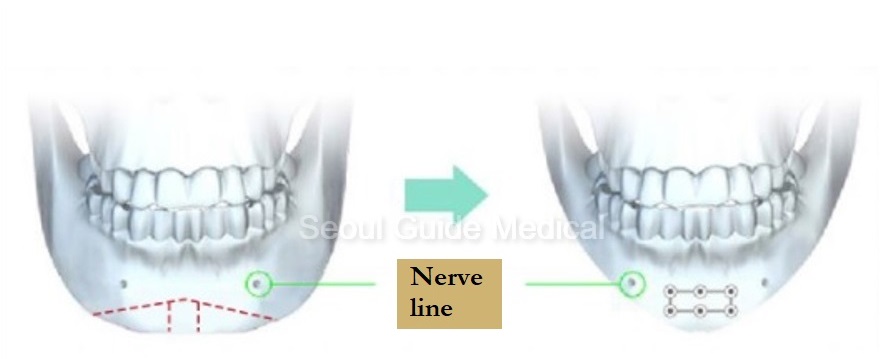
- long chin
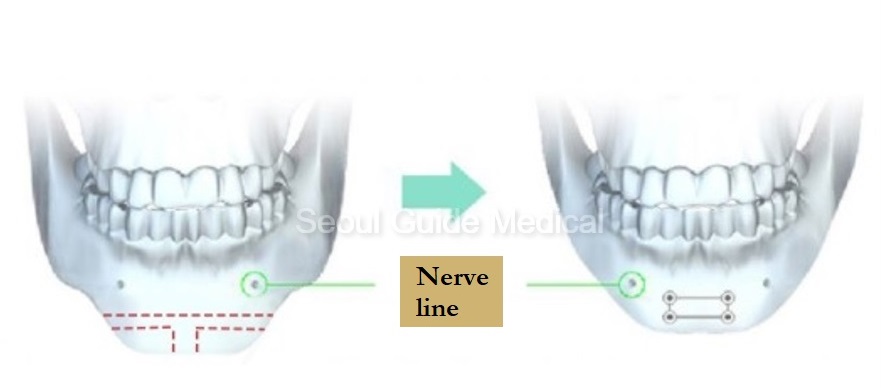
- short chin
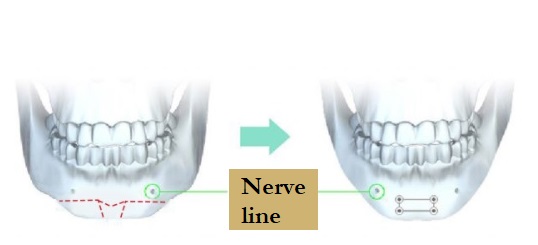
- short and receding chin
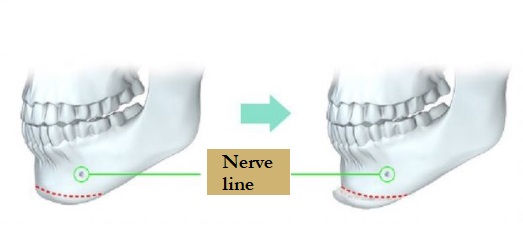
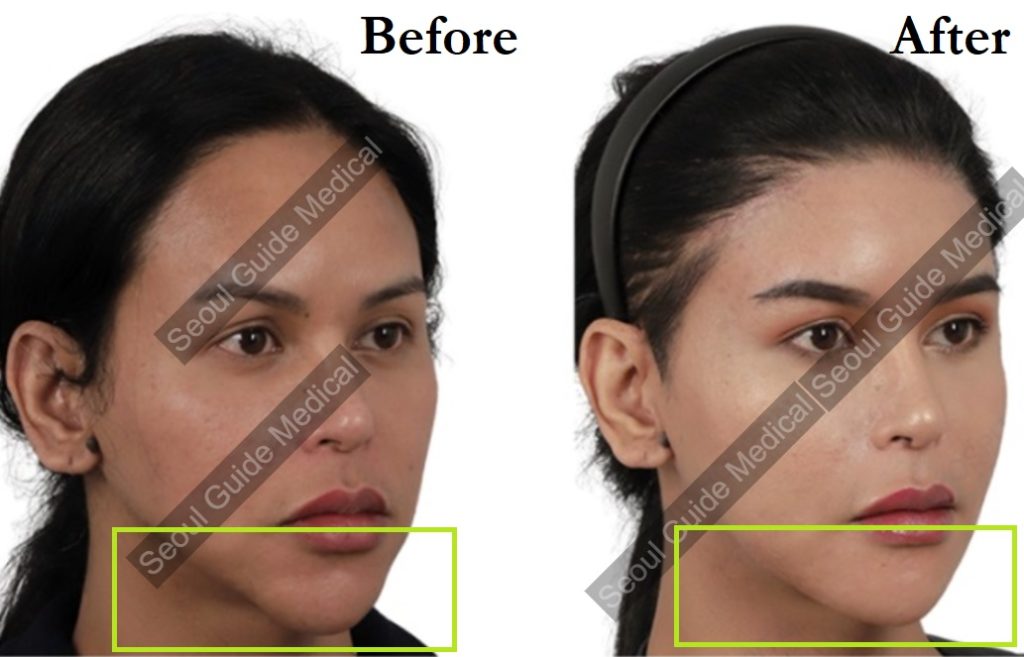
Pre-Surgery Information
Before genioplasty, it’s essential to know what you can and cannot do. Here are a few things you may be instructed not to do before the surgery. Remember that this list is generic, so things may change due to the doctor’s instructions.
- Get enough rest. Your body can heal the best and the fastest when you’re resting.
- Eat enough vegetables and fruit. Good nutrition is always important, but now your body needs even more nutrition because of the surgery. Stay away from processed meats, fried foods etc.
- Drink enough water. As said earlier, your body needs to have good nutrition. Fluids are essential as well.
- Stop drinking alcohol for at least two days before surgery or much more if possible.
- Stop smoking at least 1 week before surgery if possible. Smoking slows the healing process down and increases the risk of any complications.
- Do ask SGM all the questions you have.
- Prepare a zip up hoodie or something similar that you don’t have to place over your head.
- Remove all nail polish and piercings if possible.
- Let SGM guide you so you can focus on getting your mind ready without worrying about all the logistics.
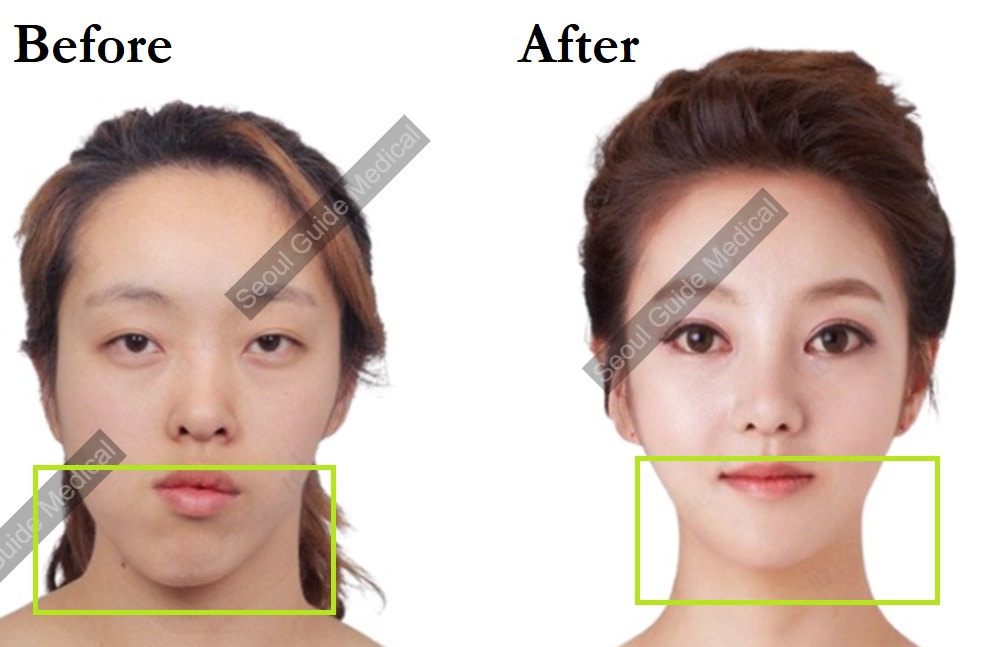
Costs
Determining the price for any surgery is difficult since it depends on many factors such as the complexity of the case, the level of the clinic, the level of the doctor, how experienced the doctor is, whether they are a specialist or not. All of these factors influence the price.
To give you a price range, genioplasty surgery is often between 3000 USD and 10,000 USD for top surgeons to do it. Keep in mind that complex cases such as revisions can be much more expensive than first time surgeries. Remember that paying too little is a recipe for disaster as you get what you pay but it isn’t always necessary to pay the most either. SGM will give you a range of different doctors, clinics and different pricing points so you can make your decision.
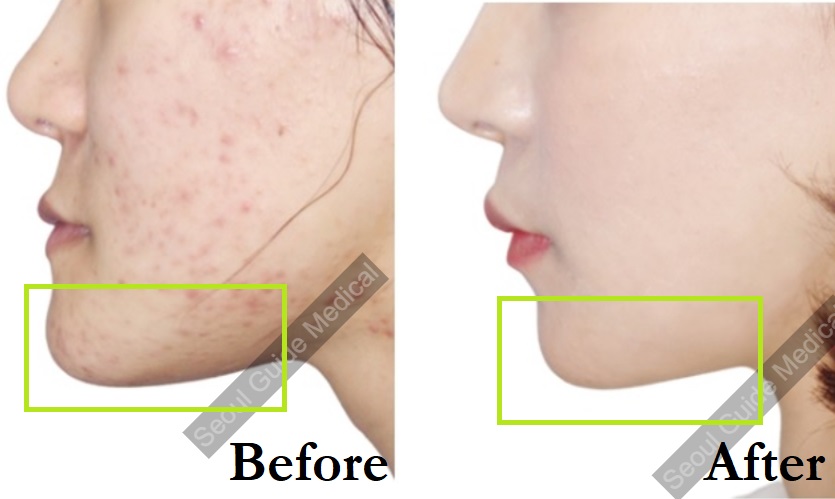
Additional Surgeries
Additional surgeries for this genioplasty could be square jaw reduction surgery, v-line surgery, cheekbone surgery and rhinoplasty surgery. These procedures are often done together for better overall balance.
What’s The Next Step?
Now that you know what genioplasty is, what the procedure is about, and whether or not you are suited for this surgery, the best thing to do now is contact us. We can answer your questions and schedule an appointment for a free consultation. In this consultation, we can develop a treatment plan that we will discuss with plastic surgeons to get you the best care and doctor for your case.
You can contact us at:
- https://seoulguidemedical.com/contact/
- +82-10-5920-5546
- [email protected]
- https://www.facebook.com/seoulguidemedical/
- https://www.instagram.com/seoulguidemedical/
We’d love to get to hear from you and hope to see you soon!
FAQ
Is Genioplasty Painful?
This is the number one question patients ask. We can assure you, genioplasty is not a painful procedure. You will be completely asleep during the surgery due to the general anesthesia. Your doctor will prescribe the appropriate pain medication because you will experience some discomfort days after the procedure. Pain should completely be gone over the following weeks.
How Long Does Swelling Last?
The chin and lower lip will swell, and you may experience difficulty talking or drinking. This is all normal since you’ve had major surgery done on your chin. After two to three days, the swelling will peak, and then it will slowly decrease in about two weeks. Keep in mind that every patient is different and can change or differ from the description above.
When Can I Start Brushing My Teeth After Genioplasty?
After having chin surgery, brushing your teeth can be difficult. Using a mouthwash is recommended, and after 3-5 days, you can begin to use a soft toothbrush. The doctor will discuss this in better detail. Following the doctor’s instructions is highly recommended since they know what’s best for your case.
Does Genioplasty Cause Numbness?
Because of the surgery, your chin and bottom can be numb and feel tingly after the surgery. Feeling this is normal and should subside. It takes several months to disappear, but this is different for every patient.
Can I Eat After Mini V-Line Surgery?
After surgery, you can eat. However, it’s advised to only eat soft foods or liquids. The surgery wounds will be in your mouth, so you should be careful with what you eat and keep the food soft until you can tolerate harder foods again or when your doctor says it’s okay to eat something harder. Because everyone heals differently, it’s recommended to always ask your doctor beforehand for permission.
When Can I Smoke After Genioplasty Surgery?
Smoking decreases the healing process, and it is recommended to not smoke at all during the three weeks after the procedure. Always discuss this with your doctor beforehand and afterward and follow their instructions.
What Can I Do To Heal The Fastests?
It’s always important to follow the doctor’s instructions since they know your case the best. It can help you to the best of their capabilities. However, you could do a few things after the surgery to heal the fastest. This includes:
- Rest enough. Rest is the key to letting your body heal.
- Go for short walks, about 5-10 minutes. Try not to elevate your heart rate. Although rest is important, walking and moving around is also a good thing to do.
- Eat healthily. Eat vegetables and fruits; good nutrition is an excellent idea to get started and heal the fastest.
Always discuss things like this with your doctor since they may have different or additional ideas.
